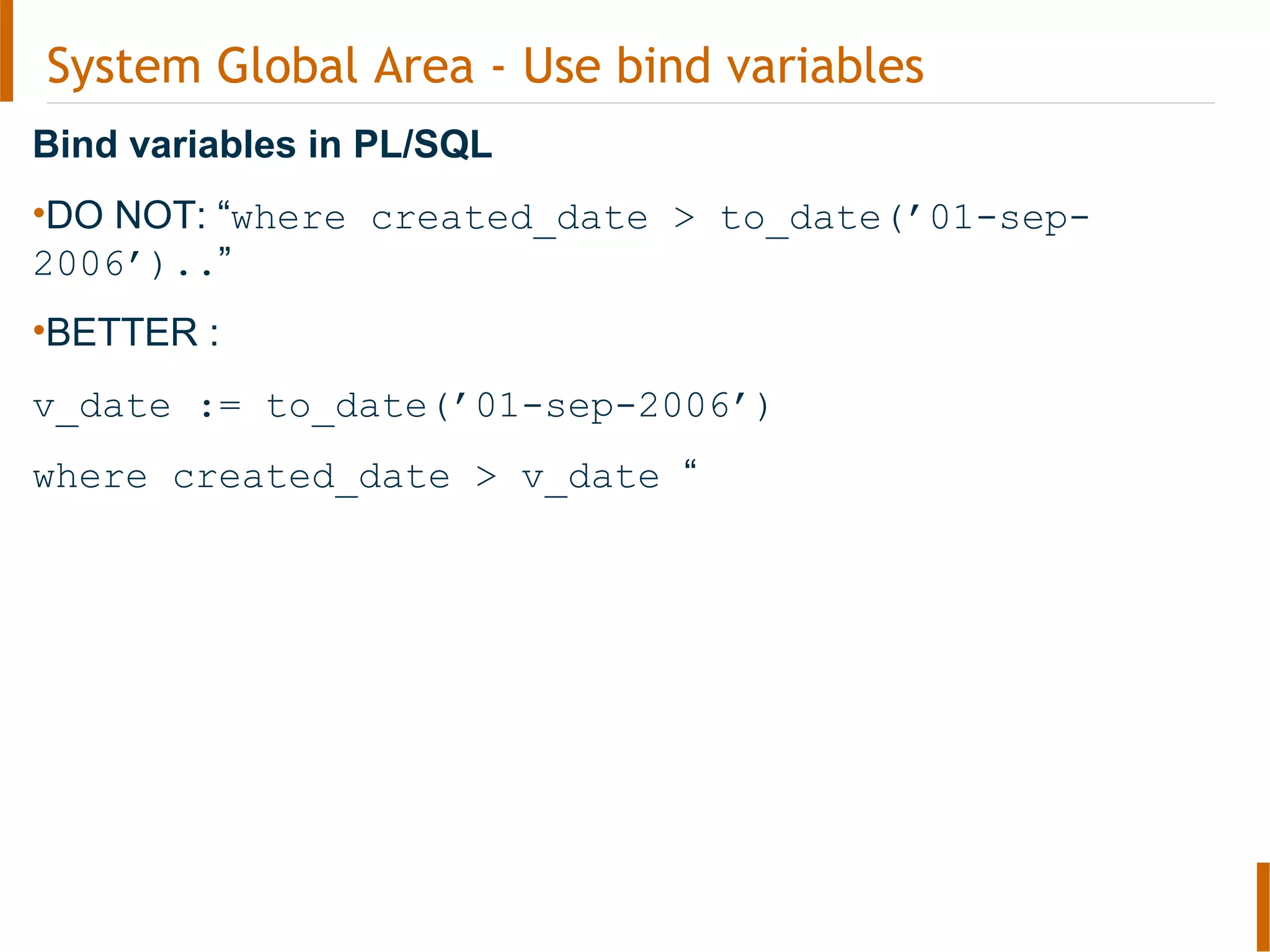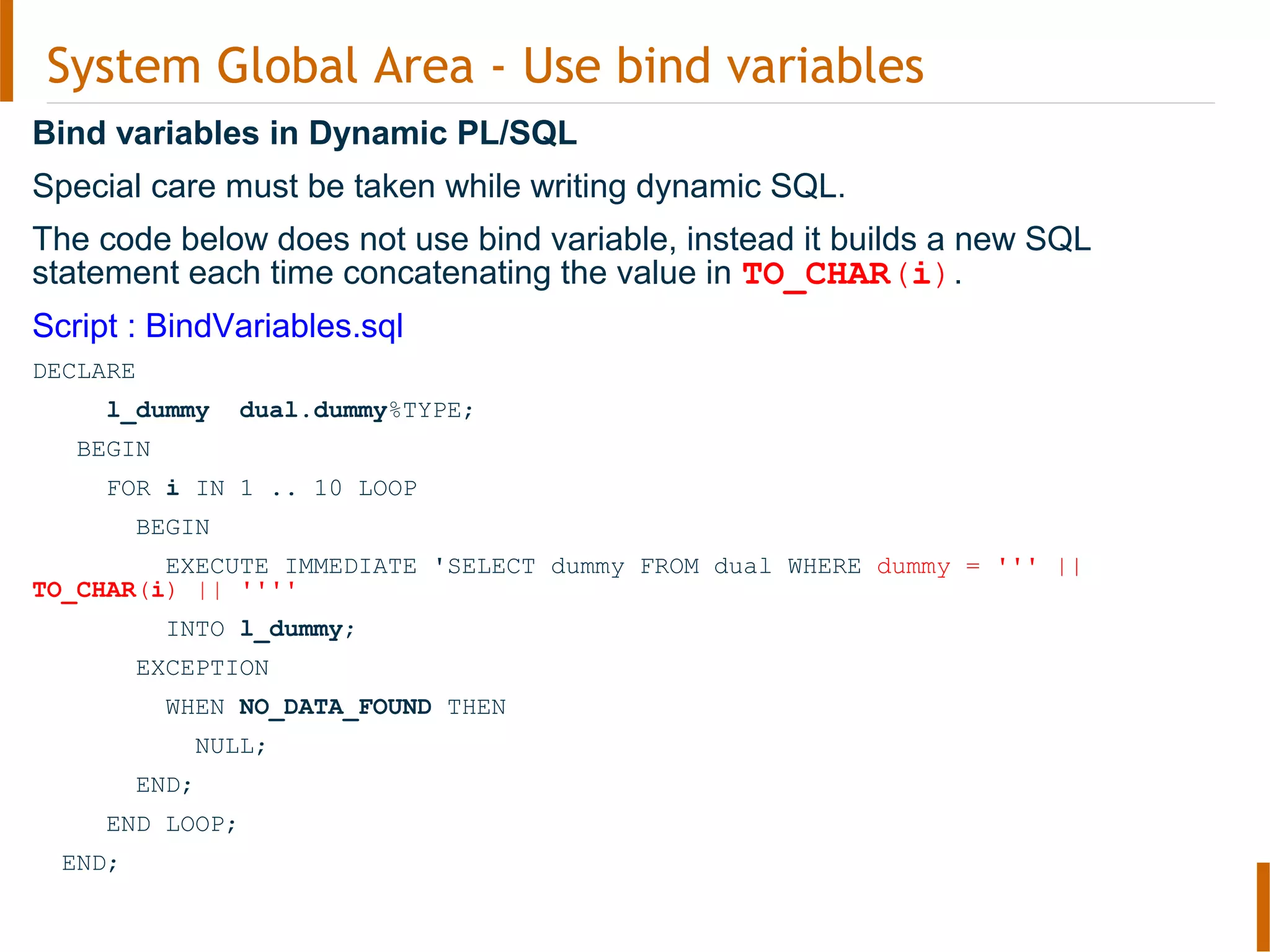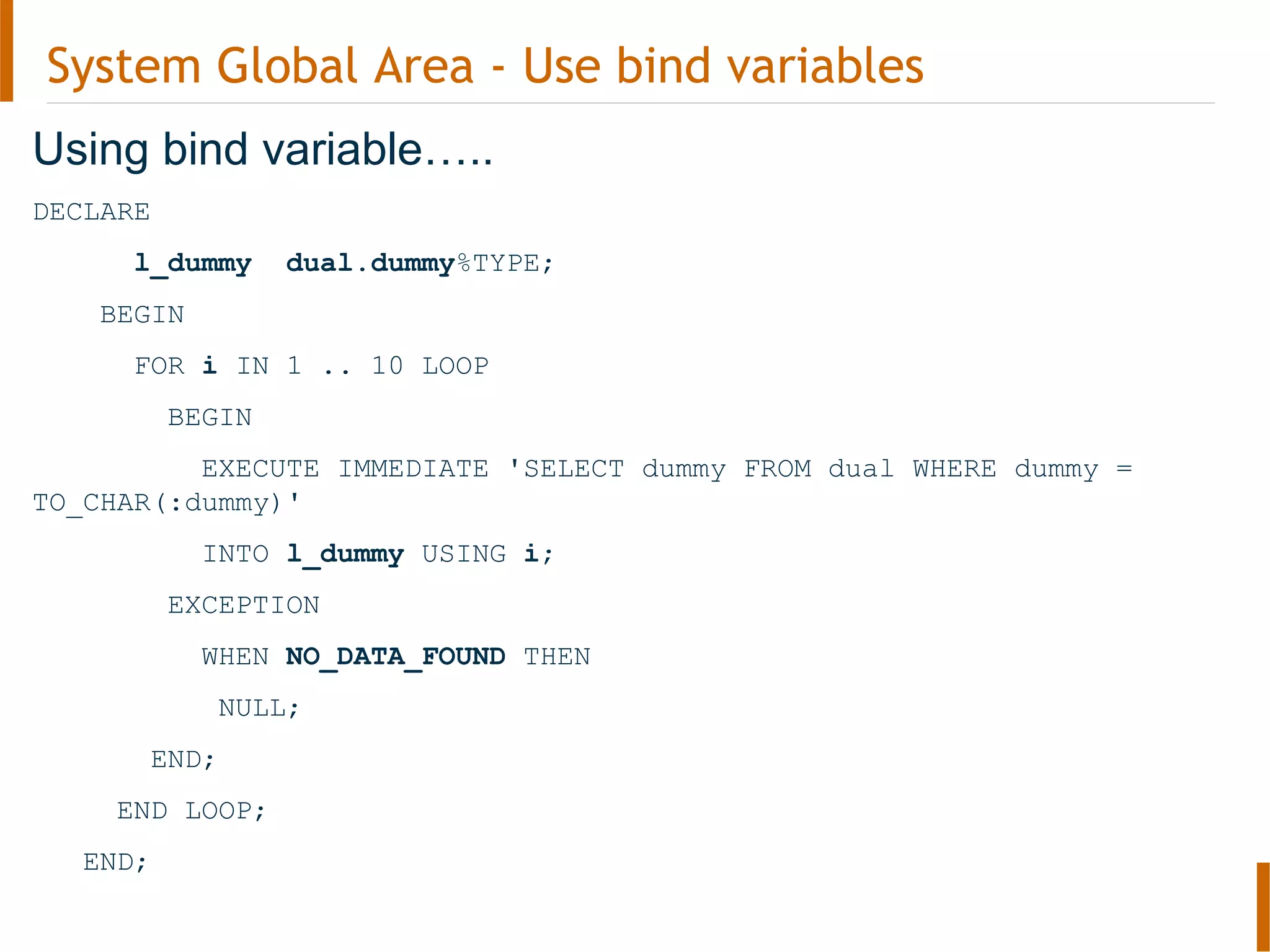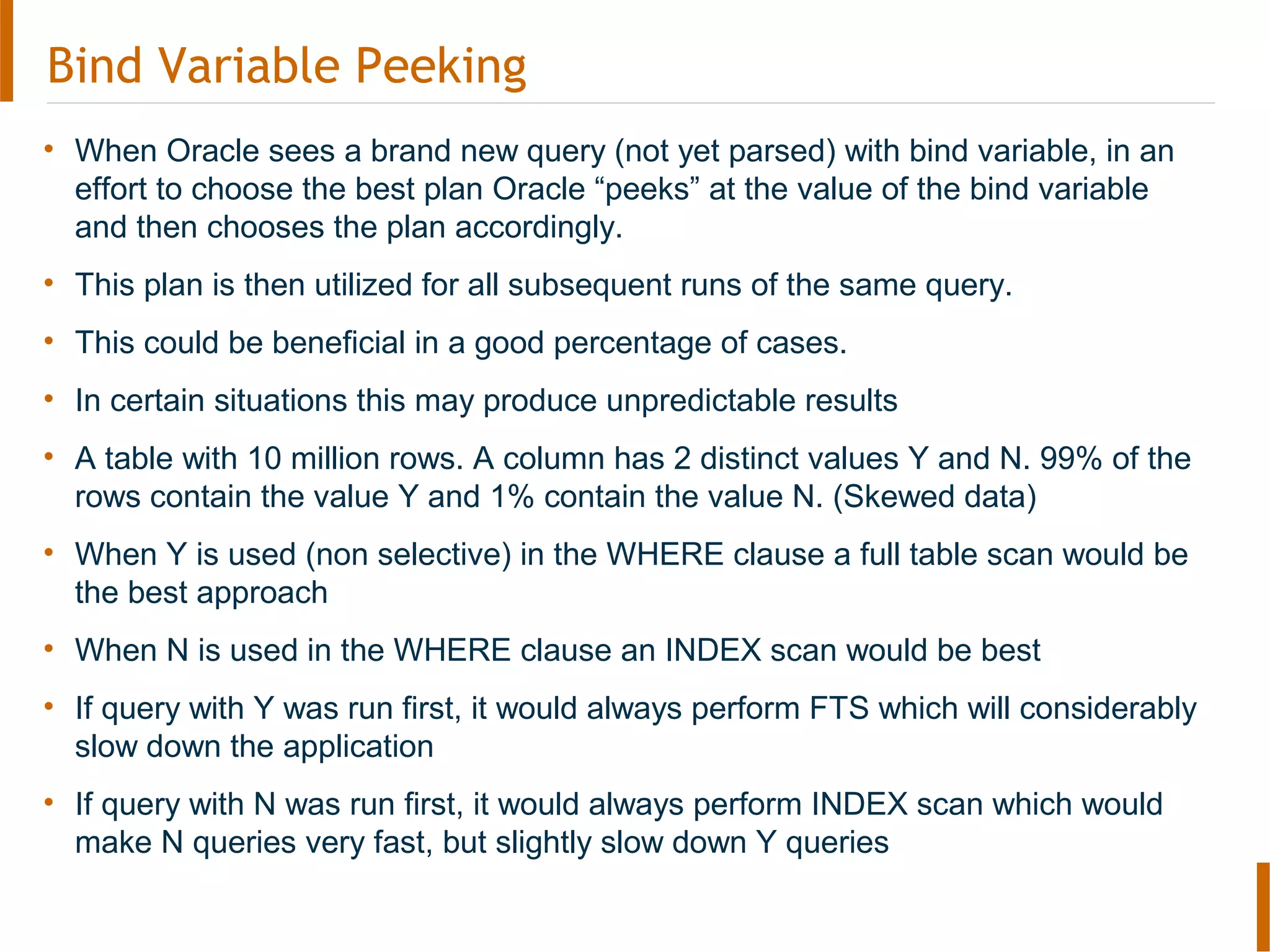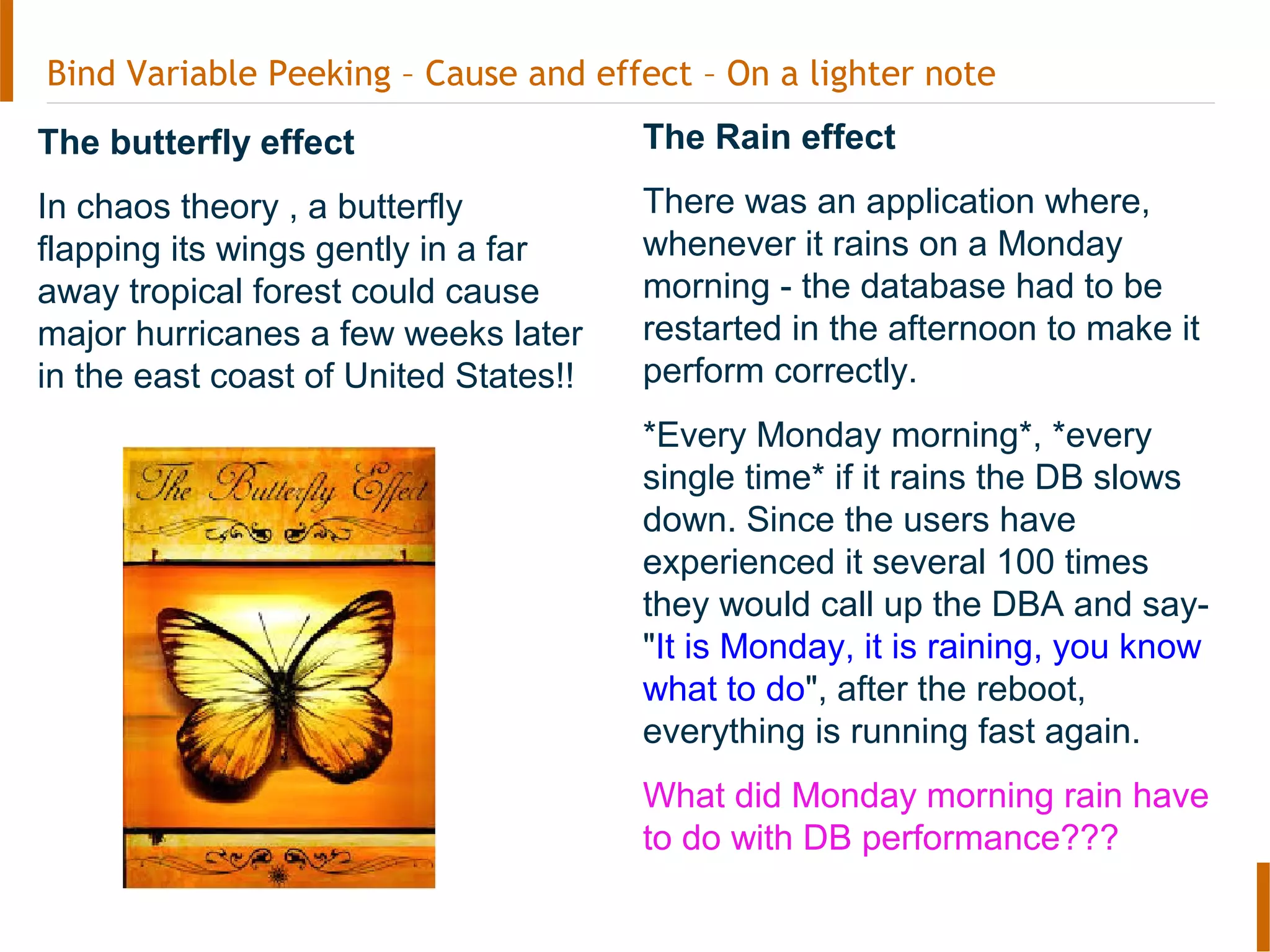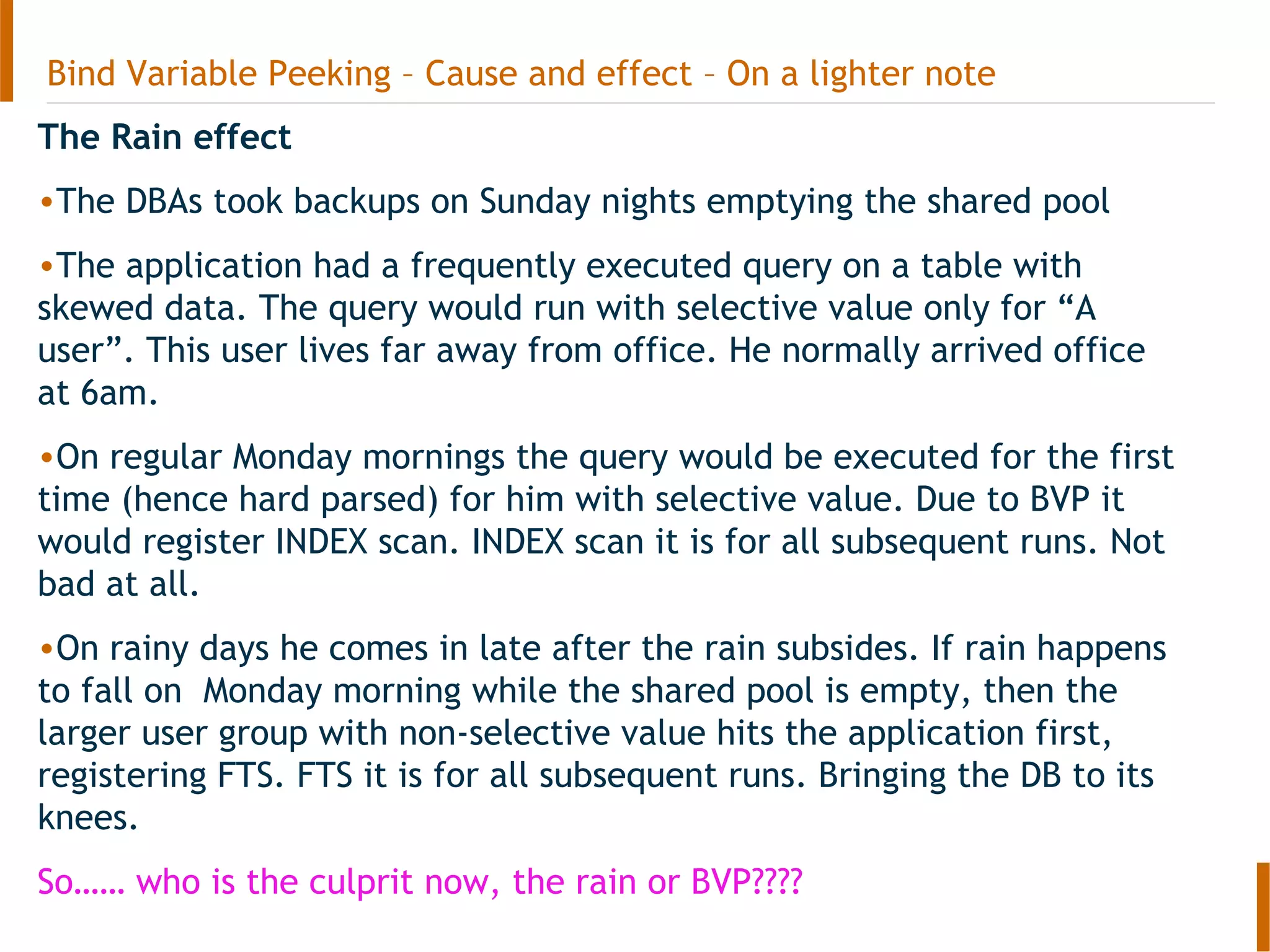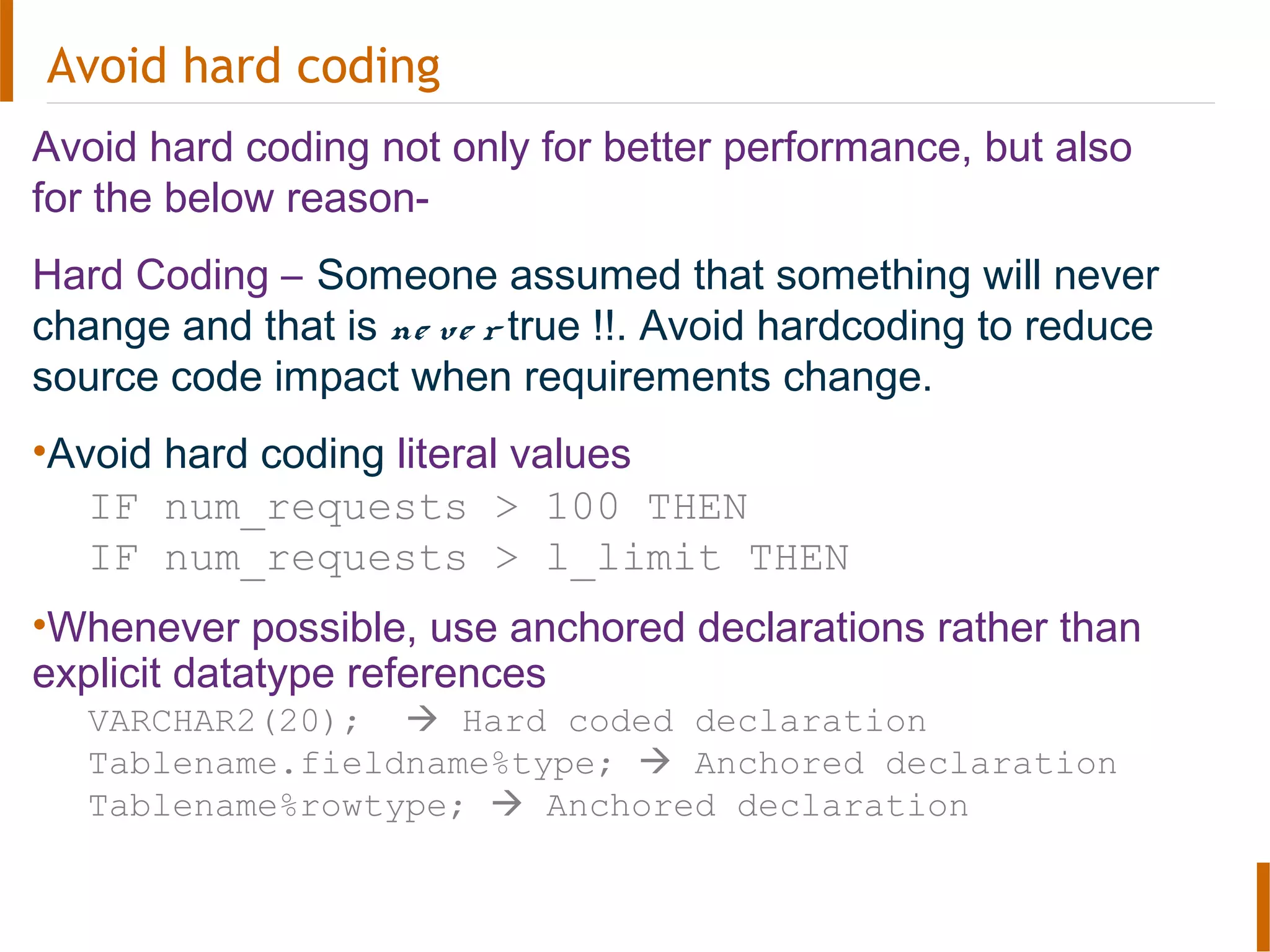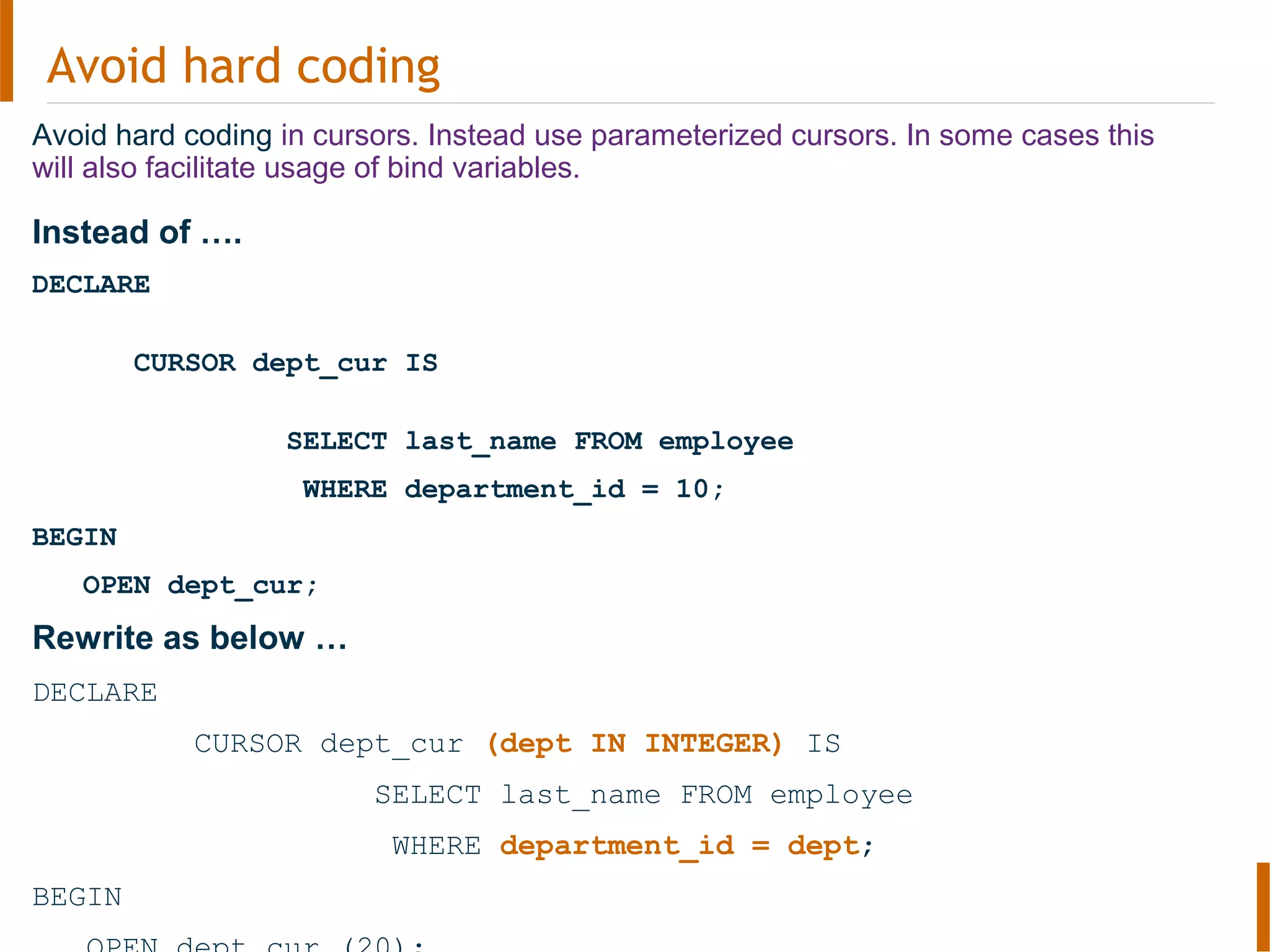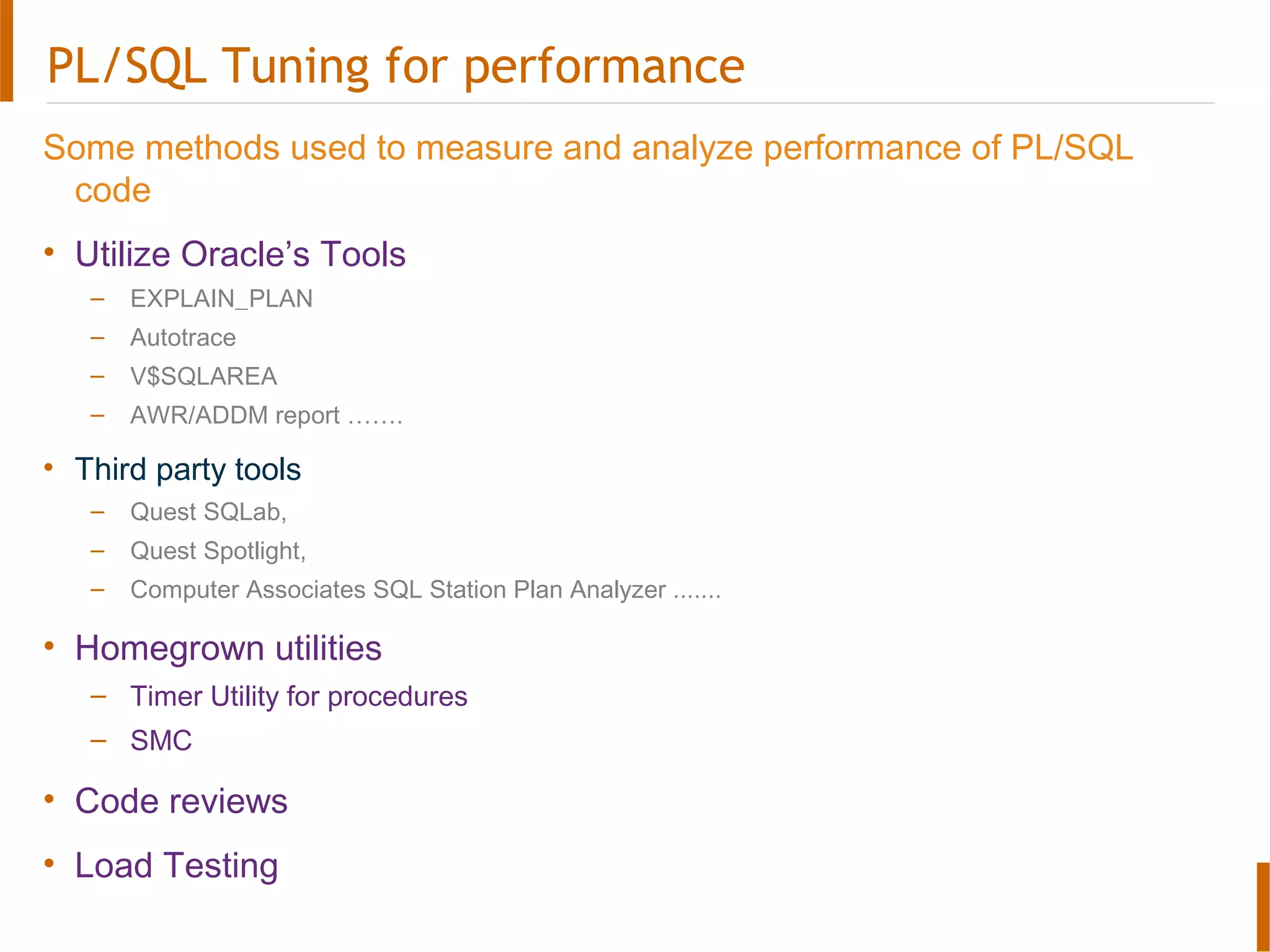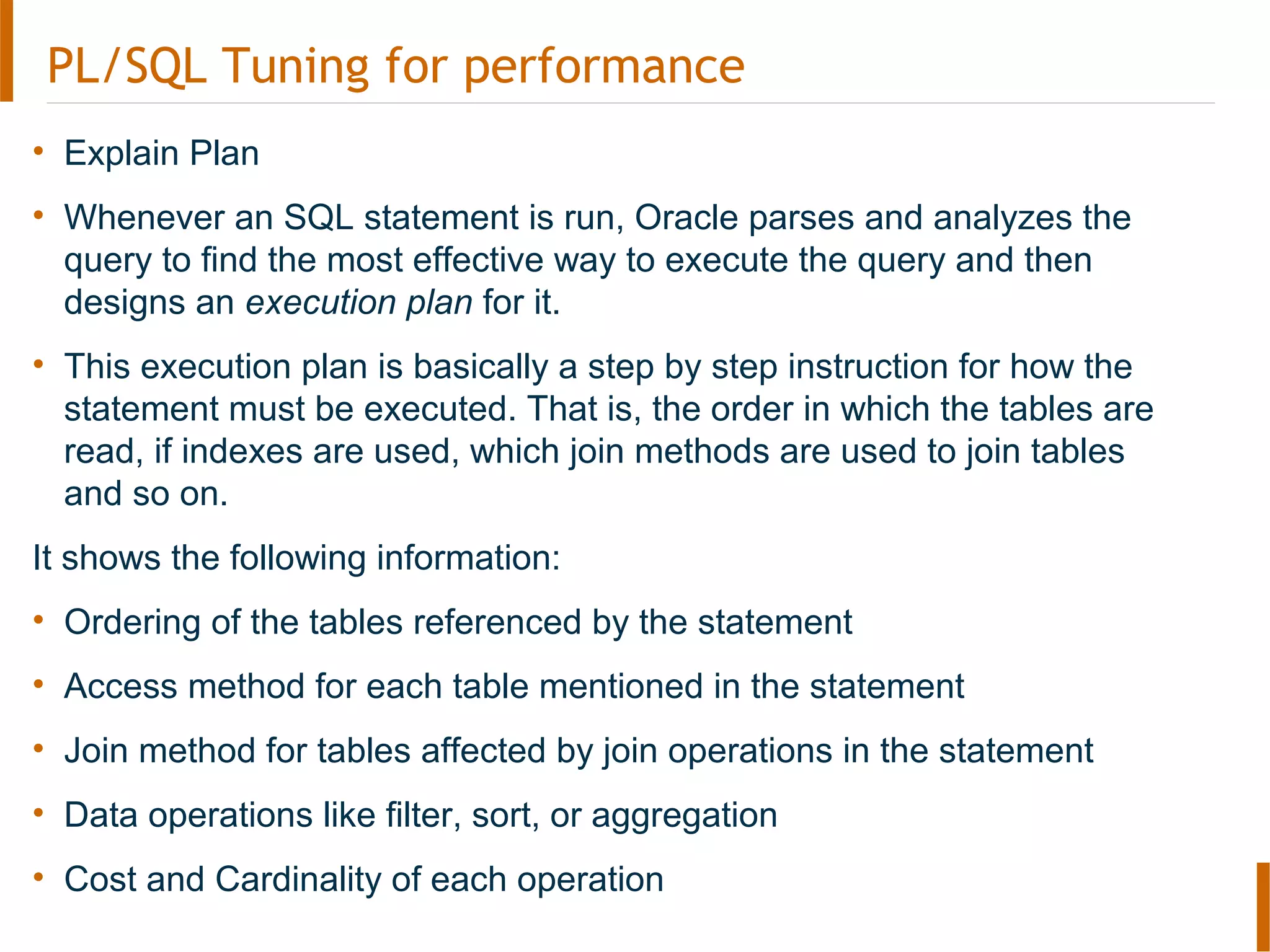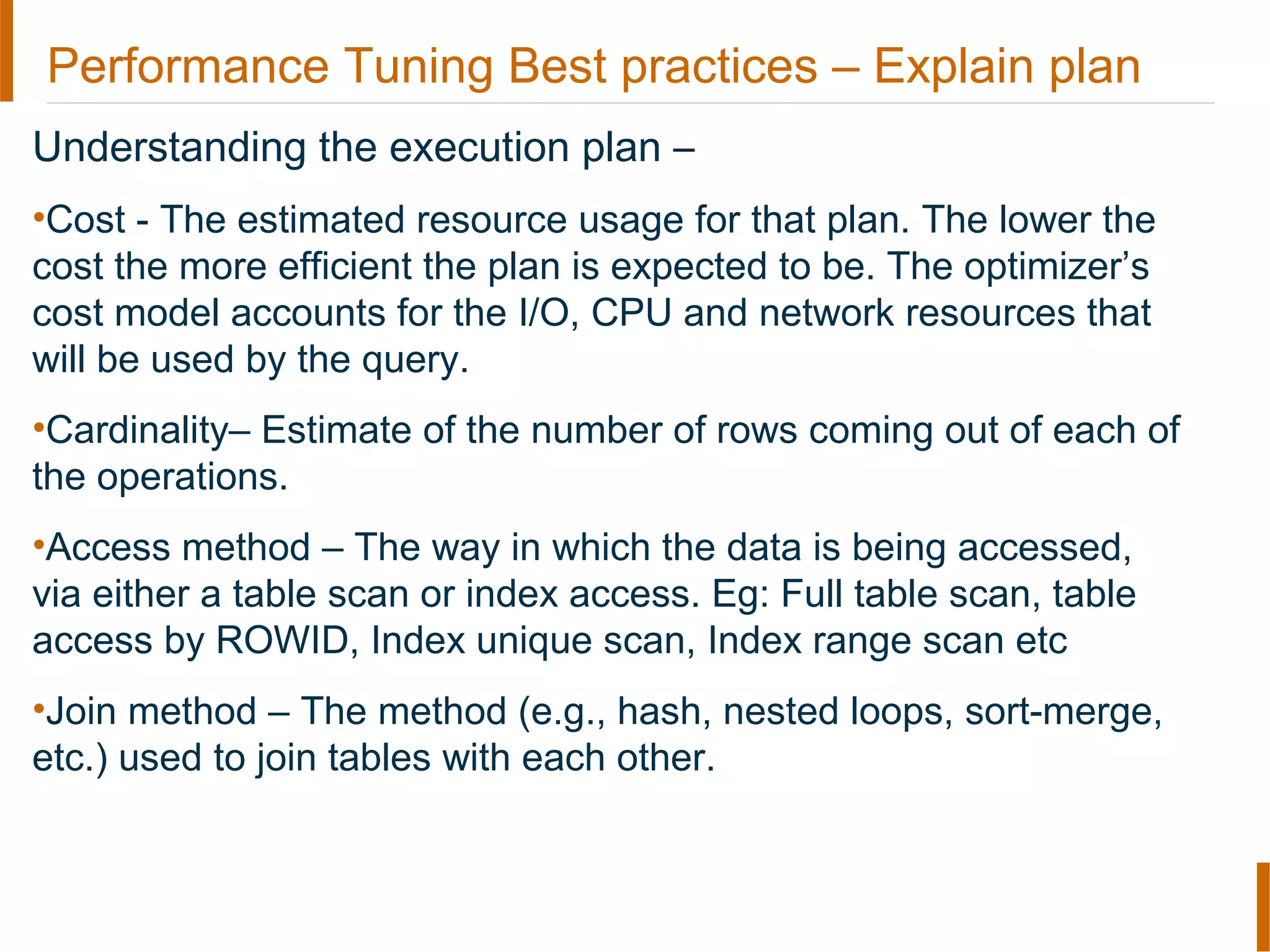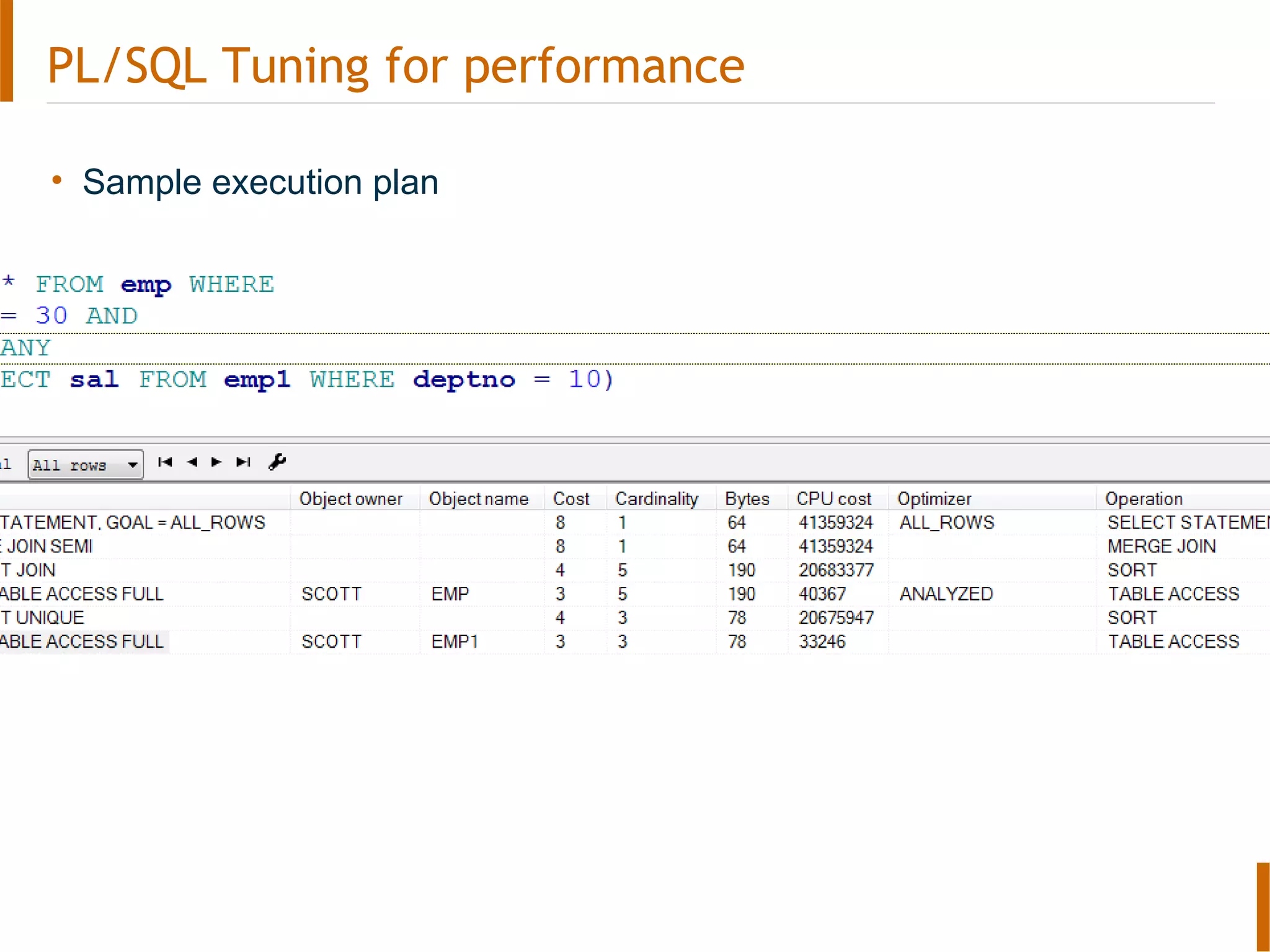The document provides a detailed overview of PL/SQL best practices and Oracle architecture, focusing on performance tuning, query optimization, and memory management. Key concepts include the roles of the database and instance, the importance of the System Global Area, and effective use of cache and shared pools. It emphasizes methods to avoid code repetition, the utility of bind variables, and ongoing learning for improved performance.
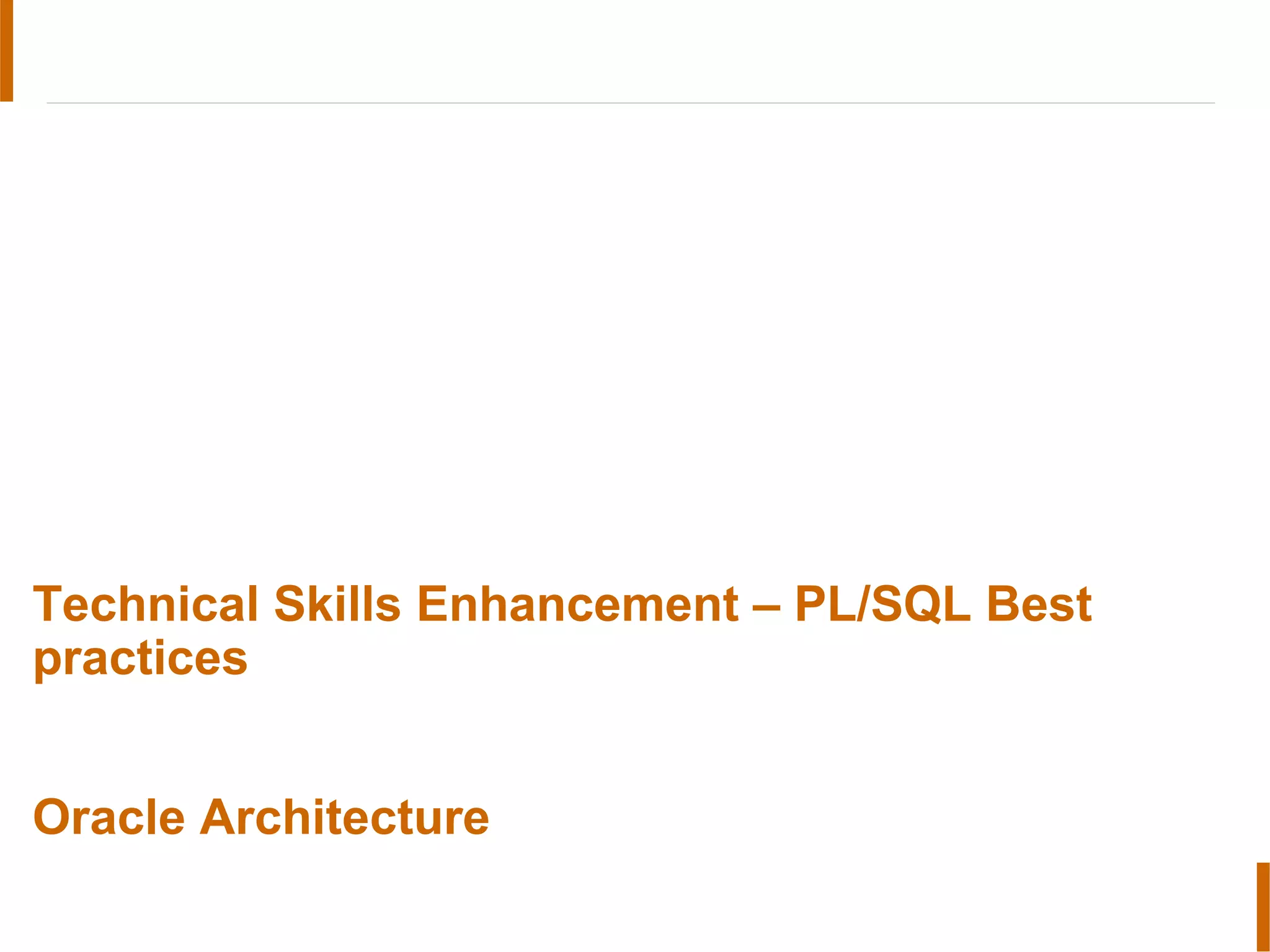
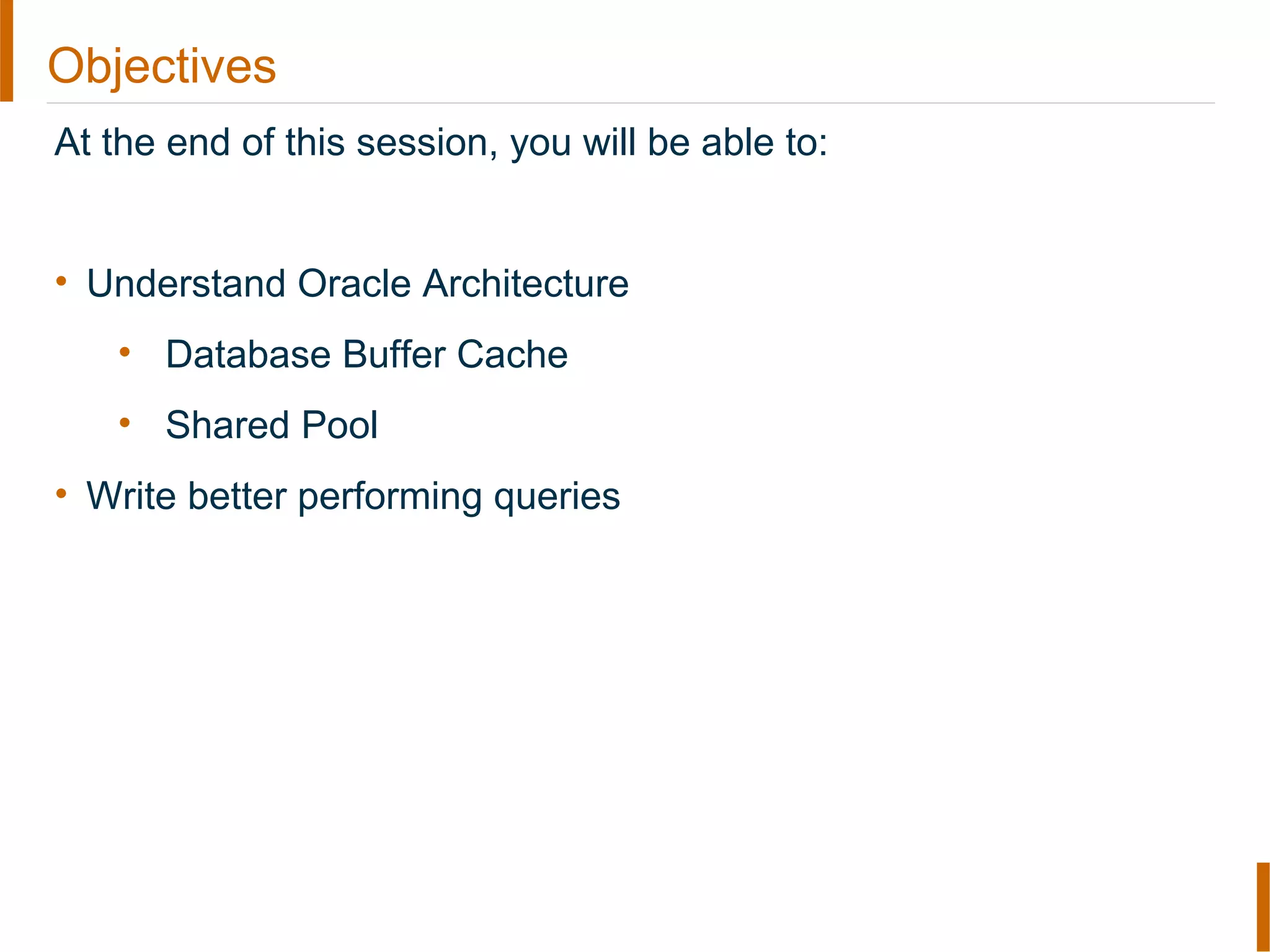
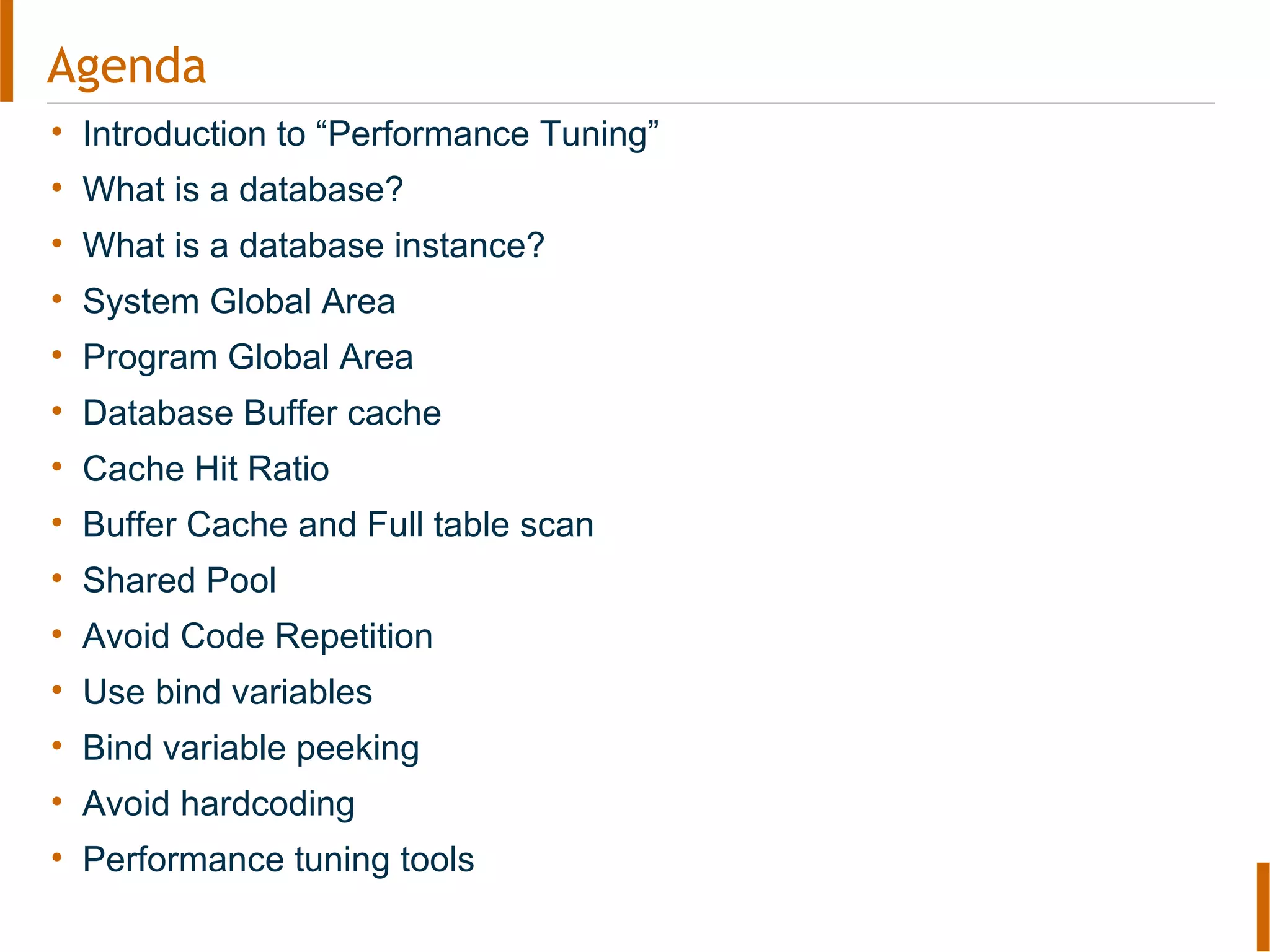
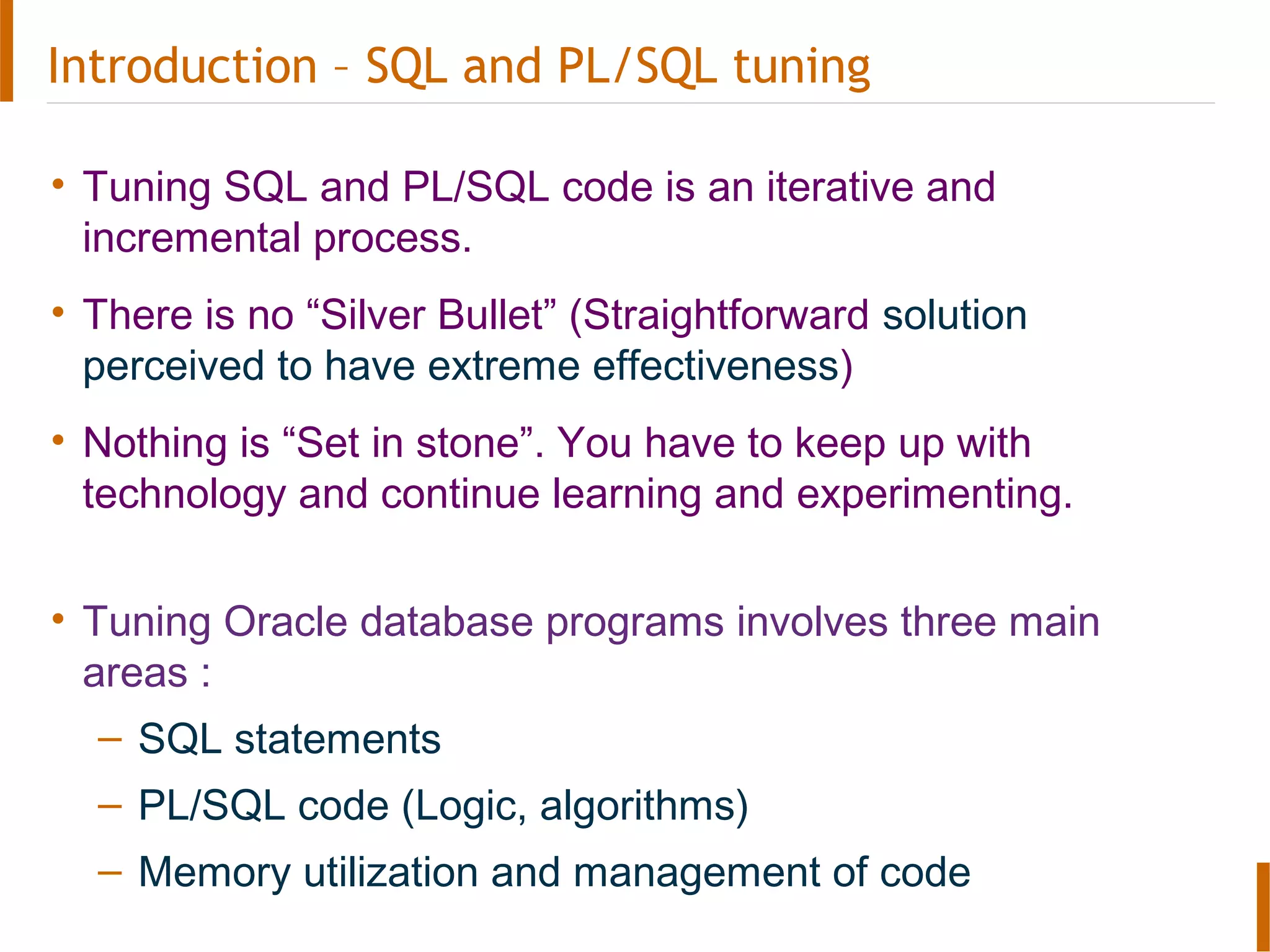
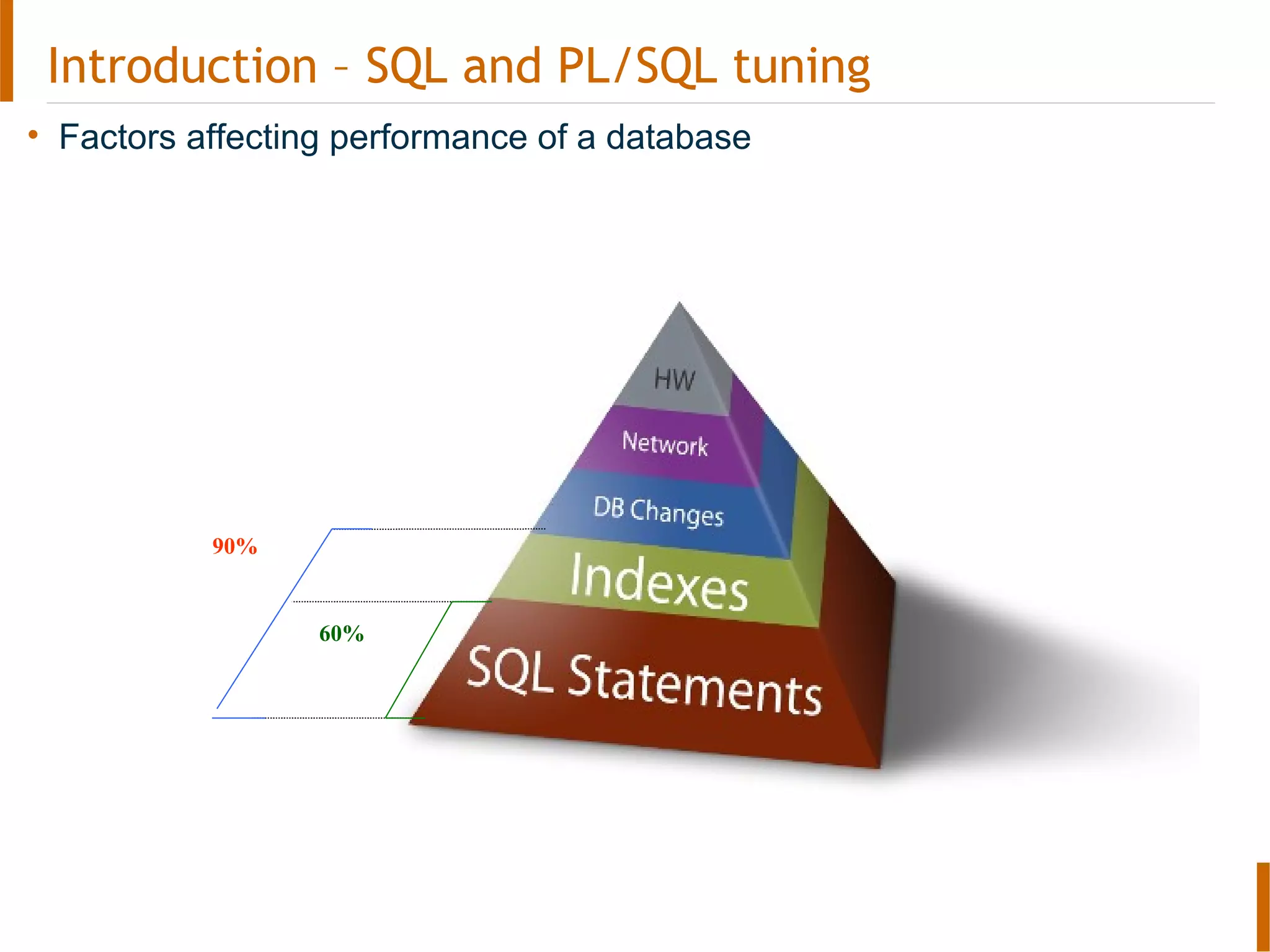
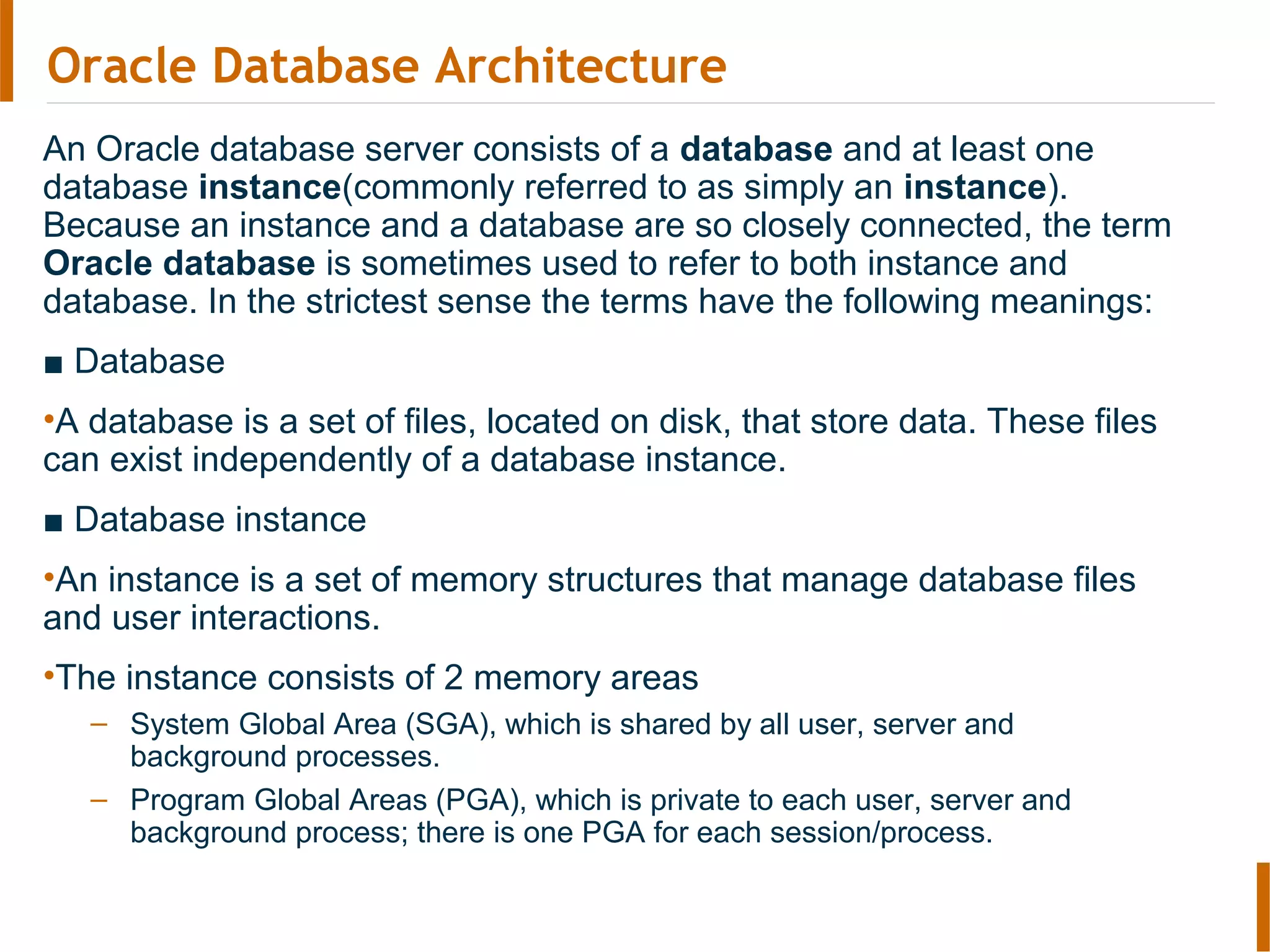
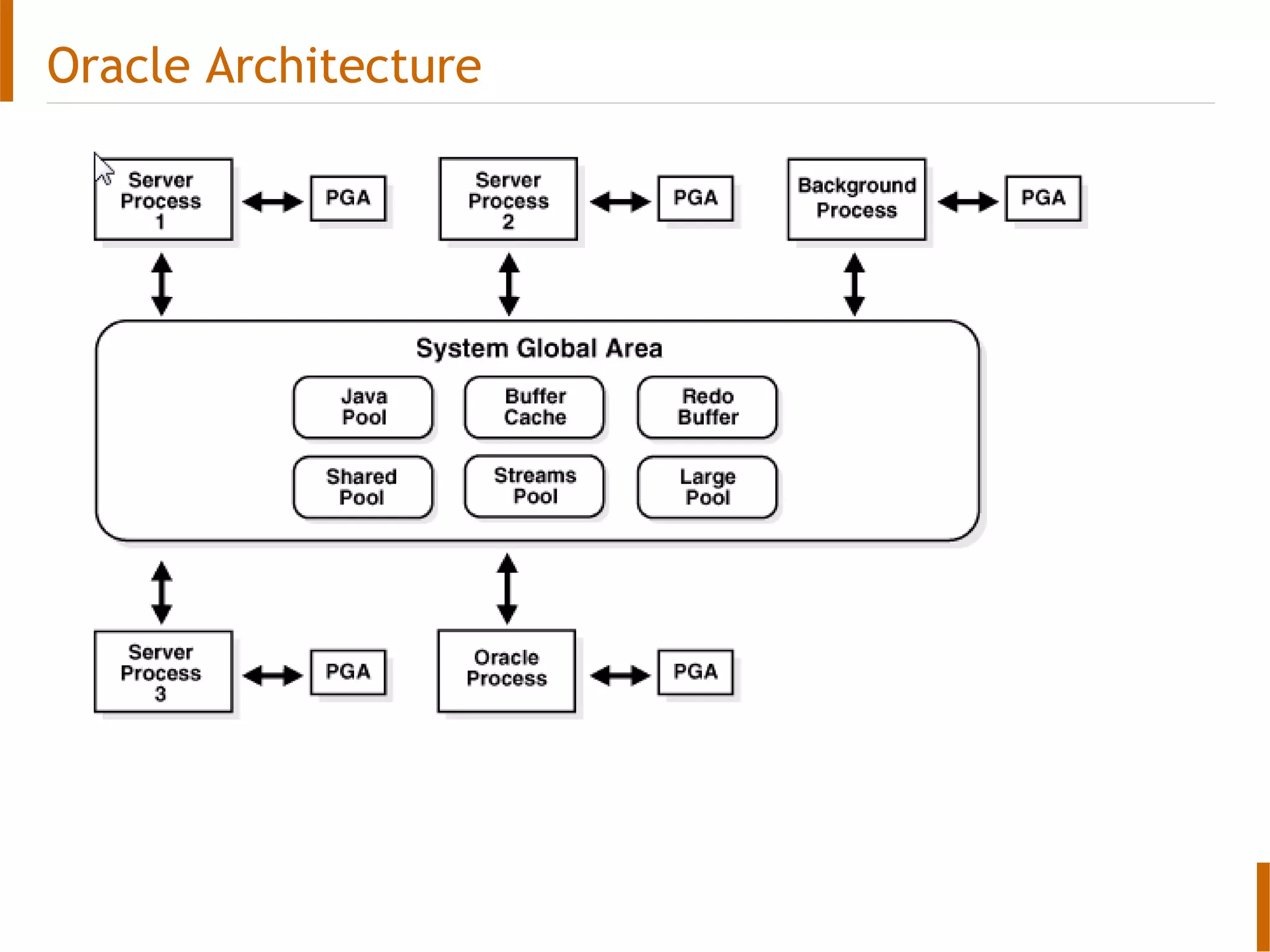
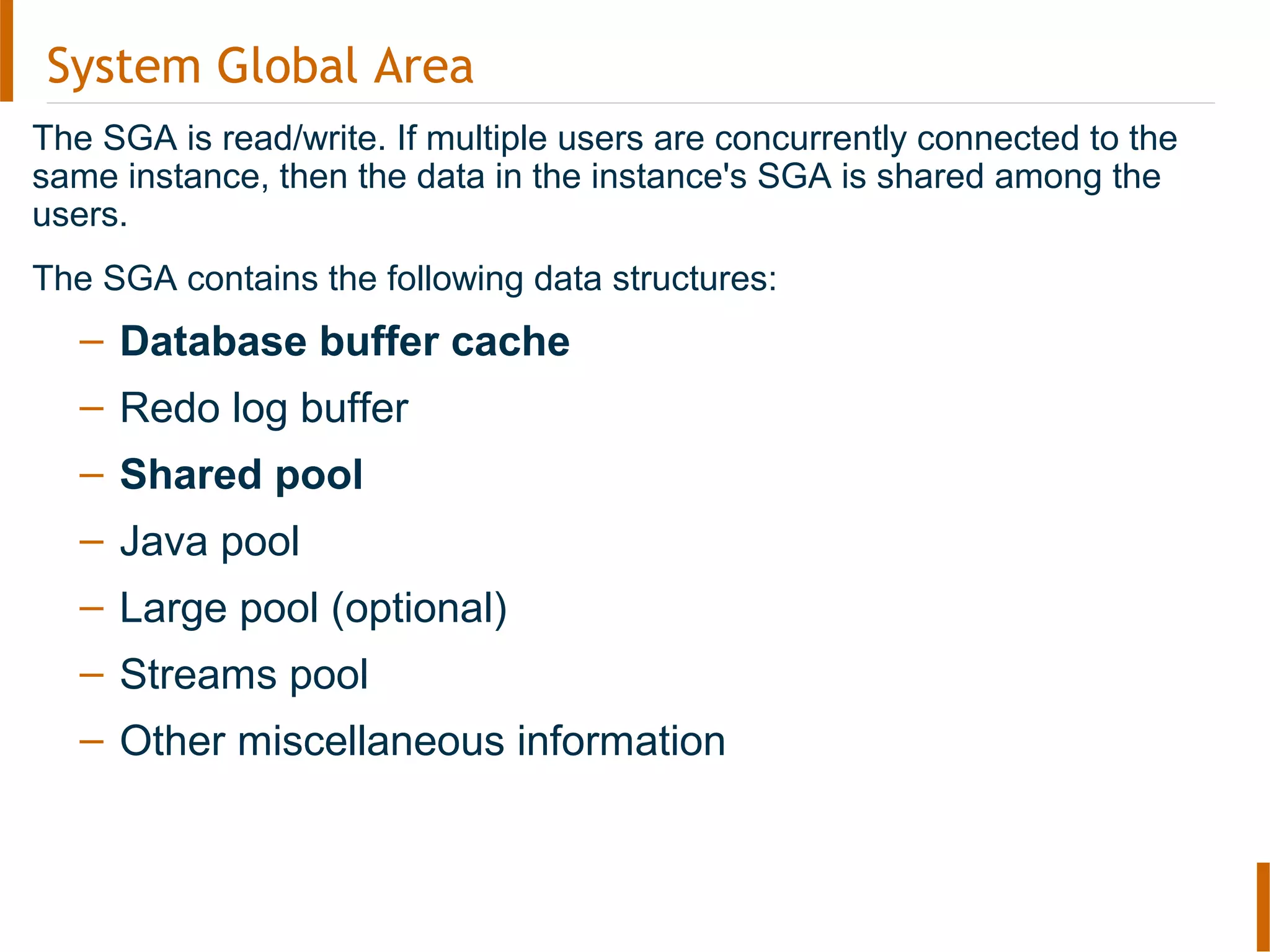
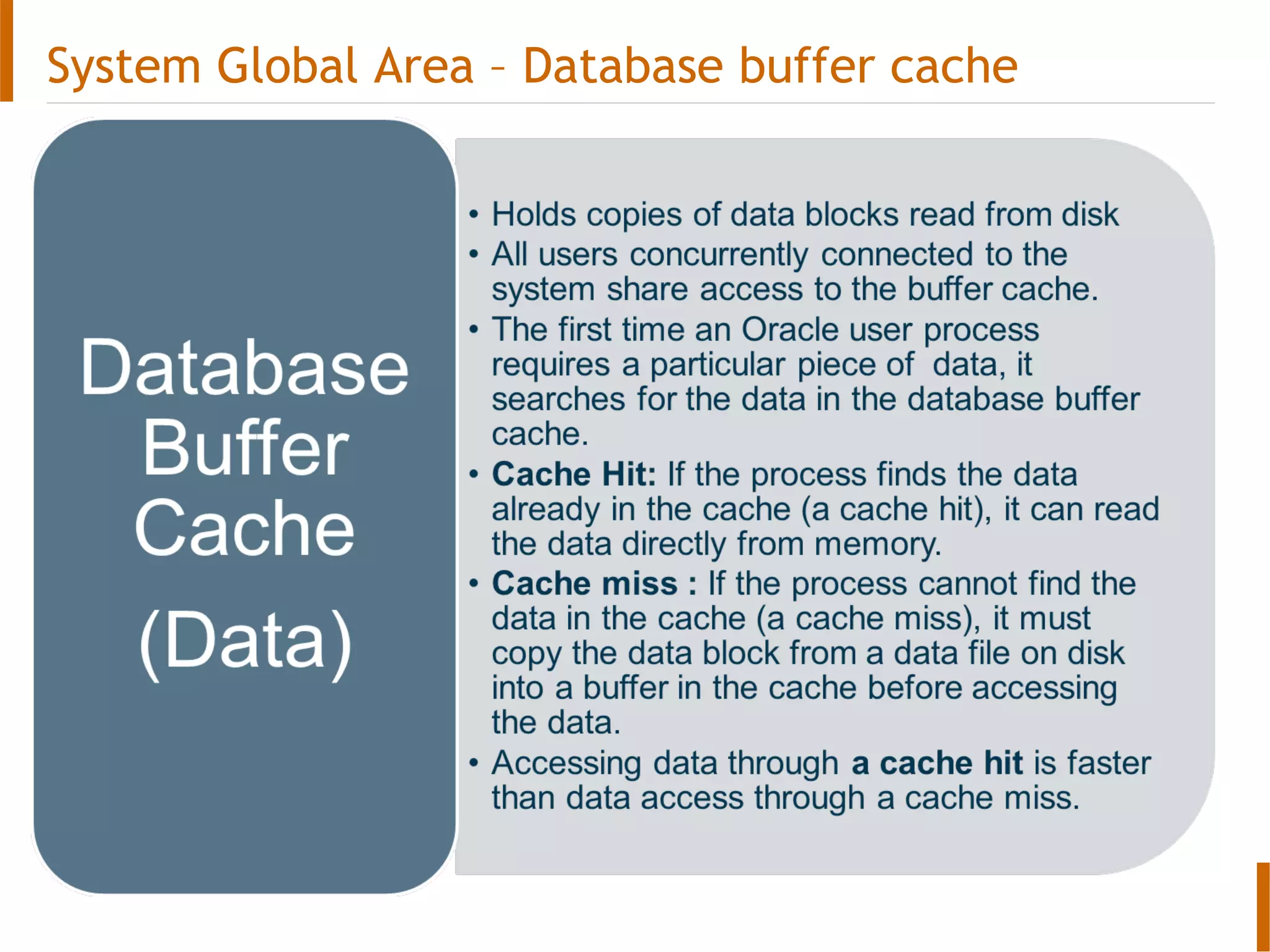
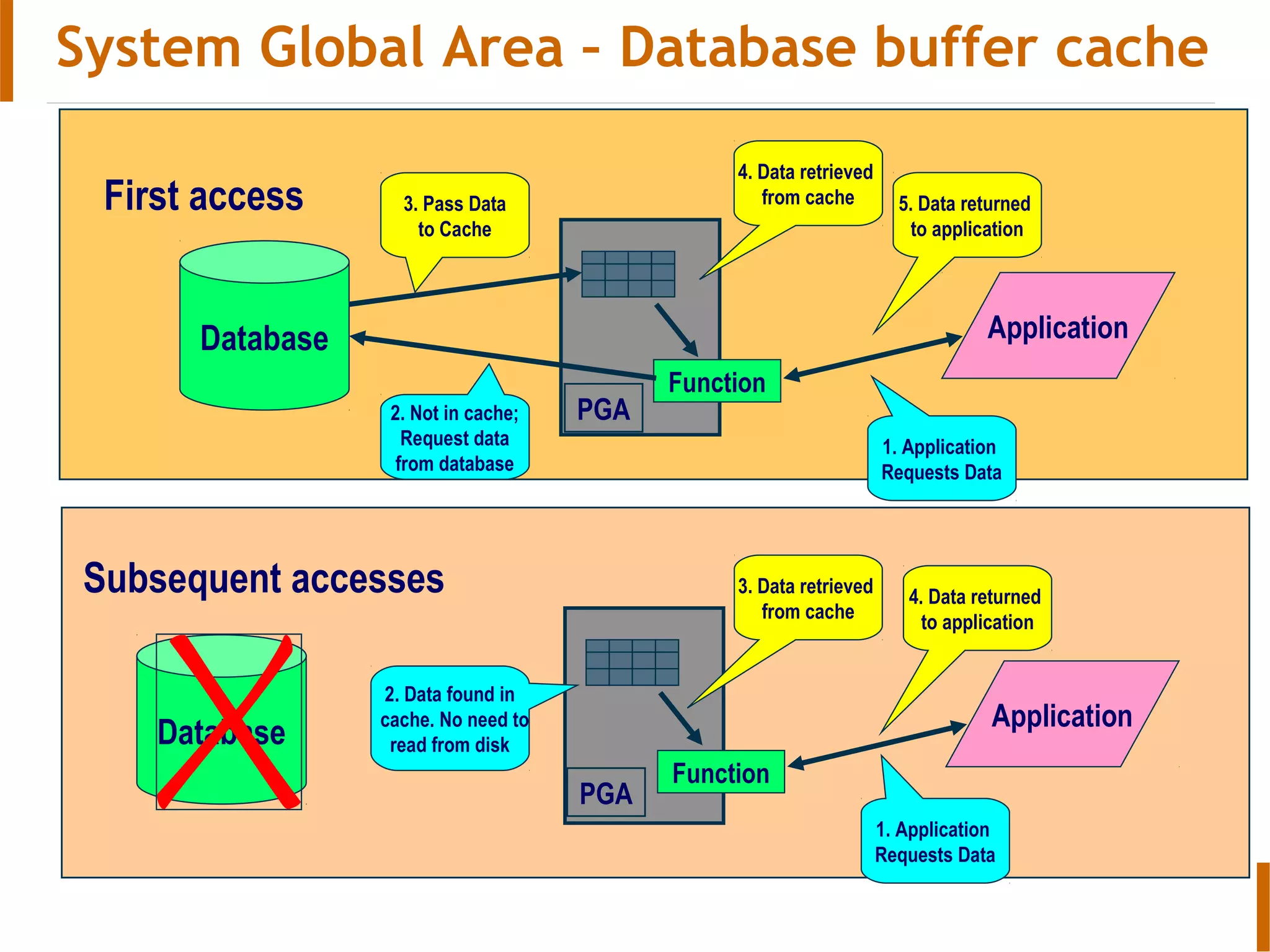
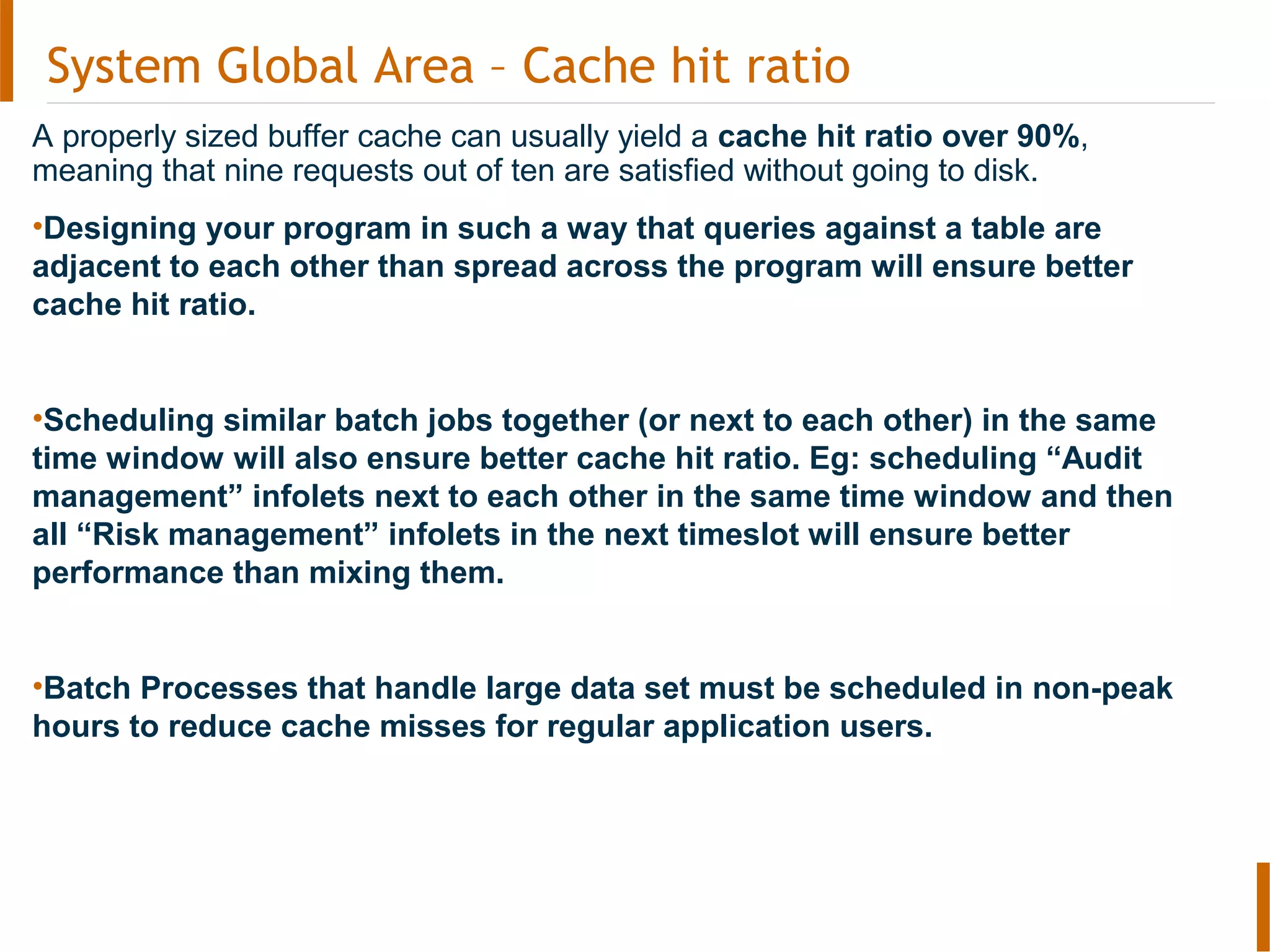
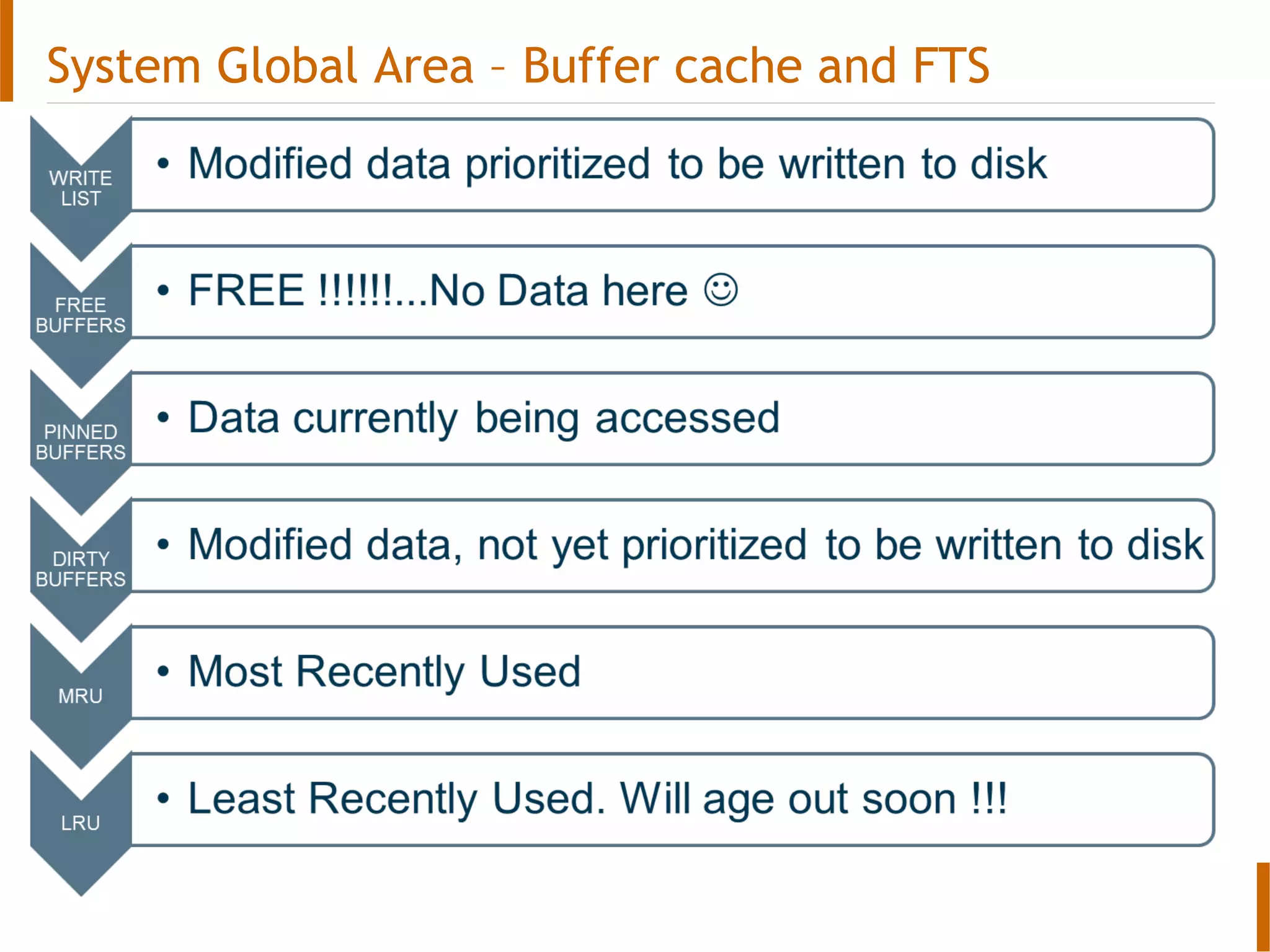
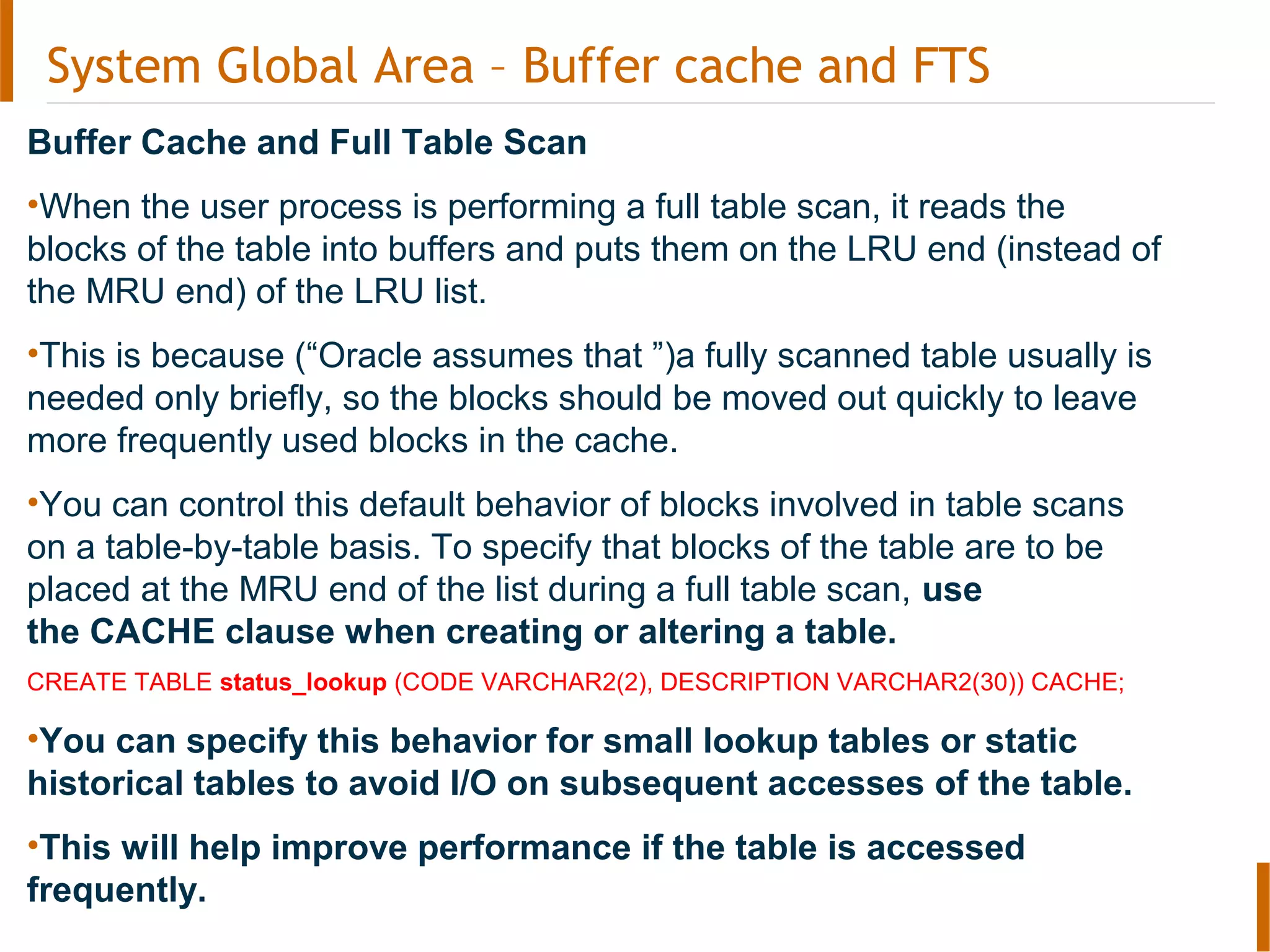
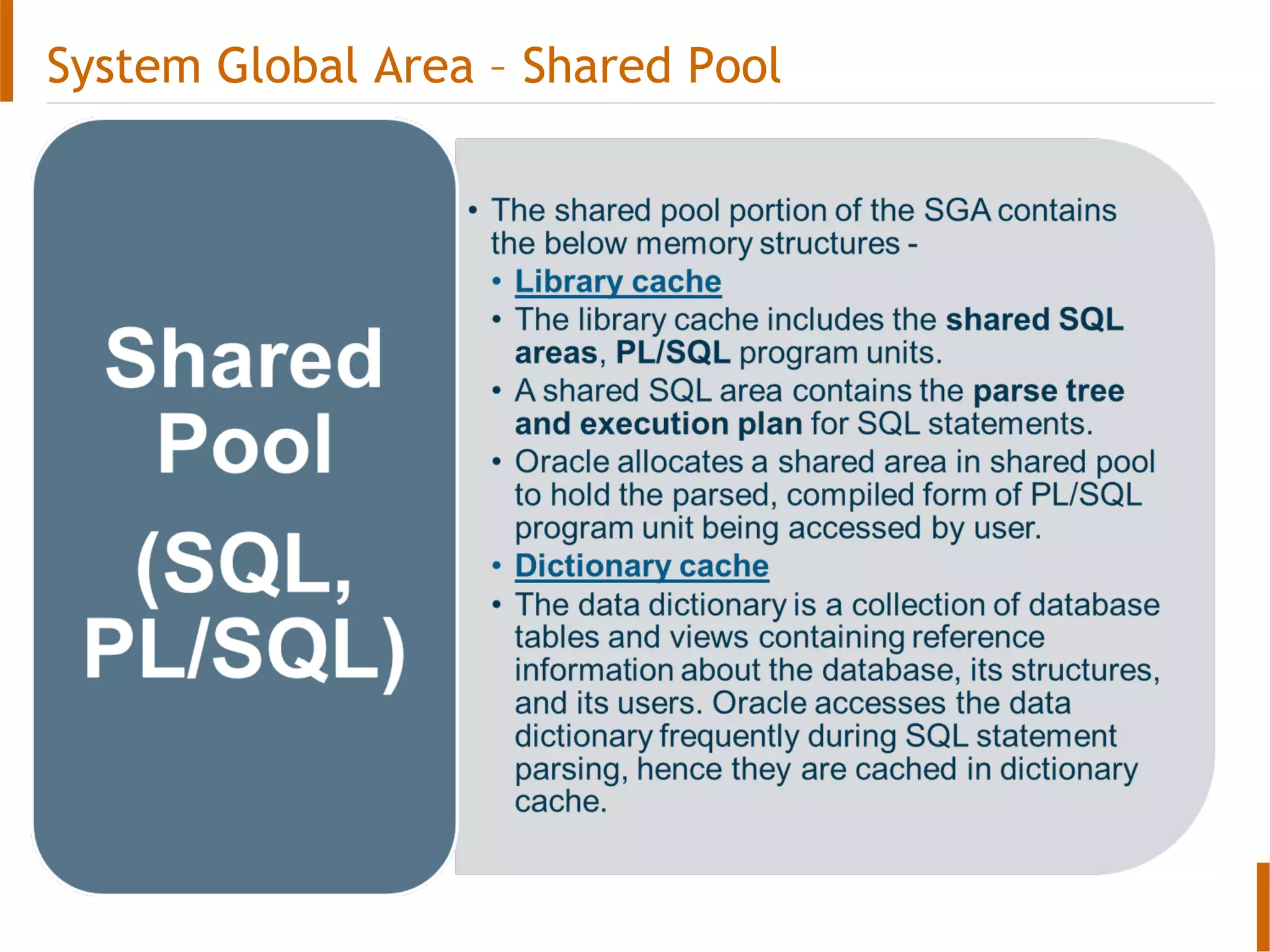
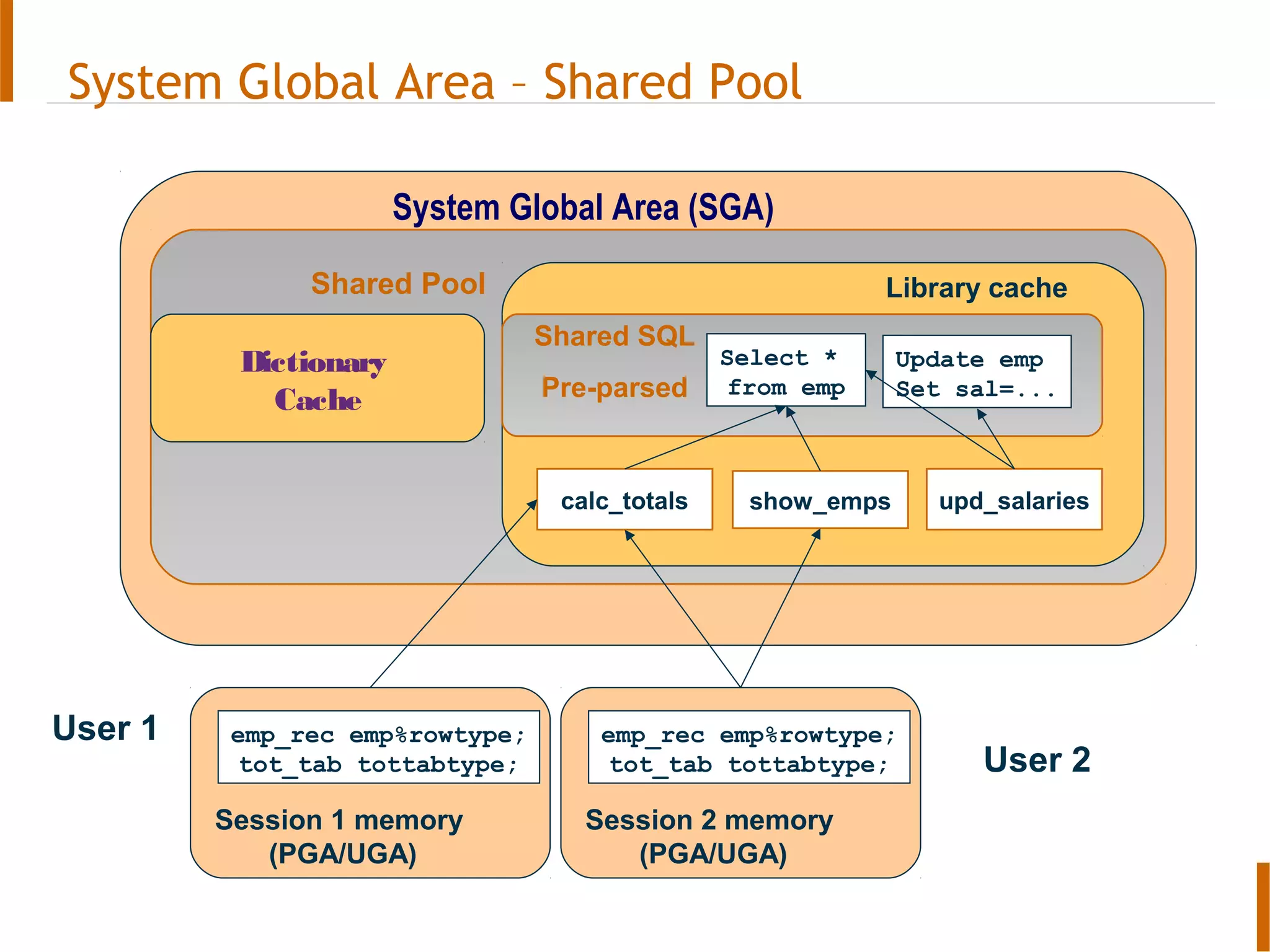
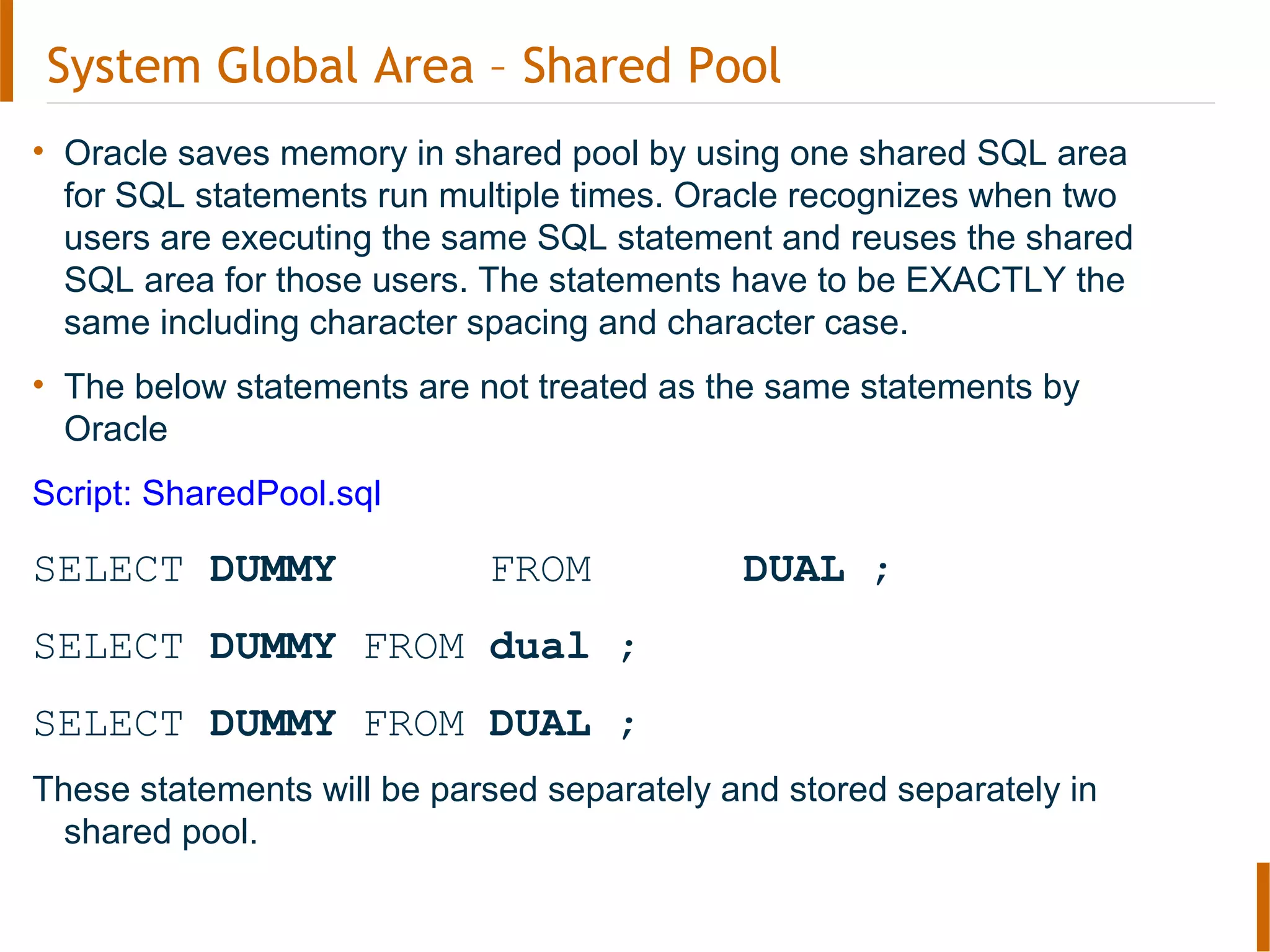
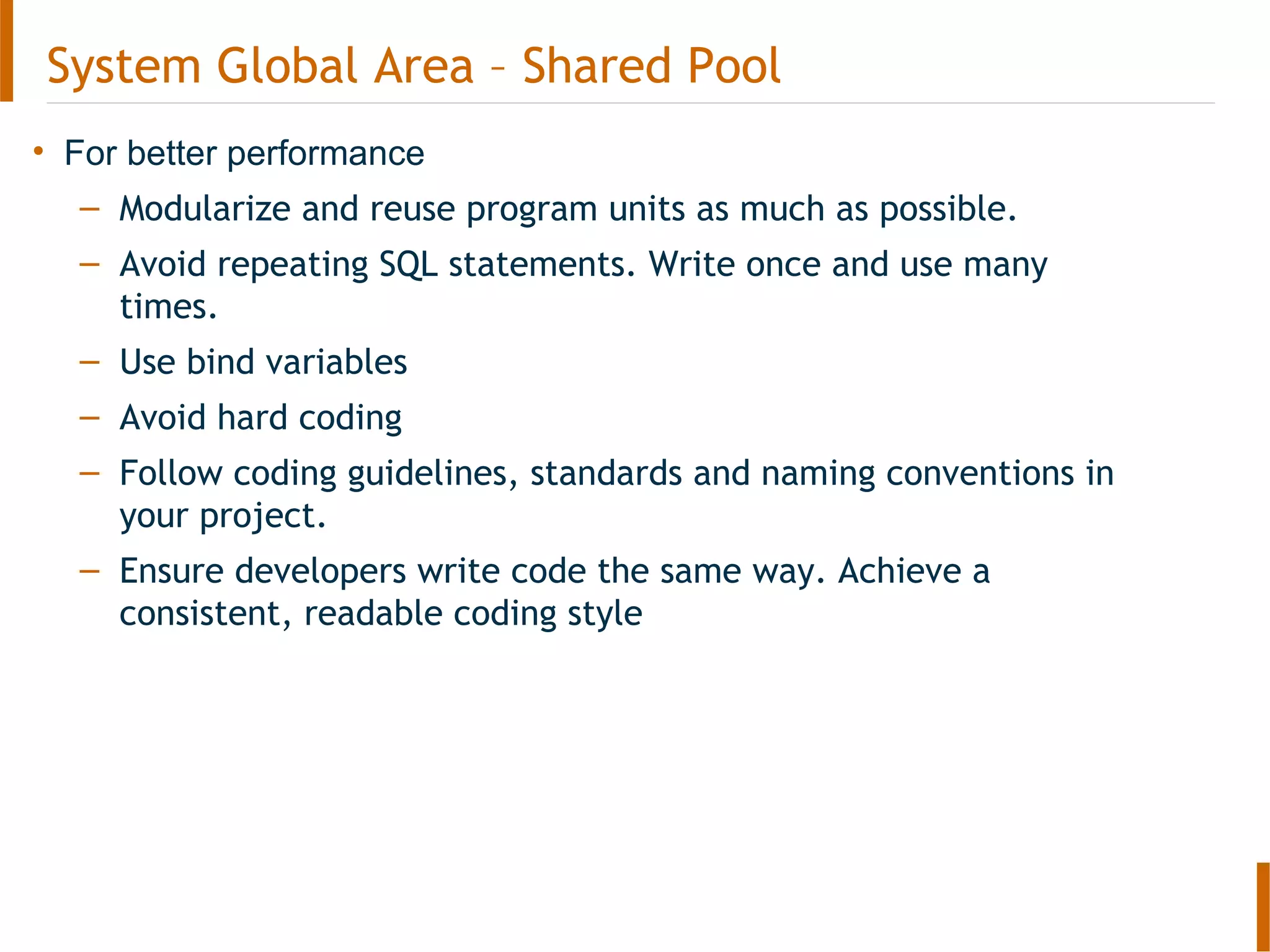
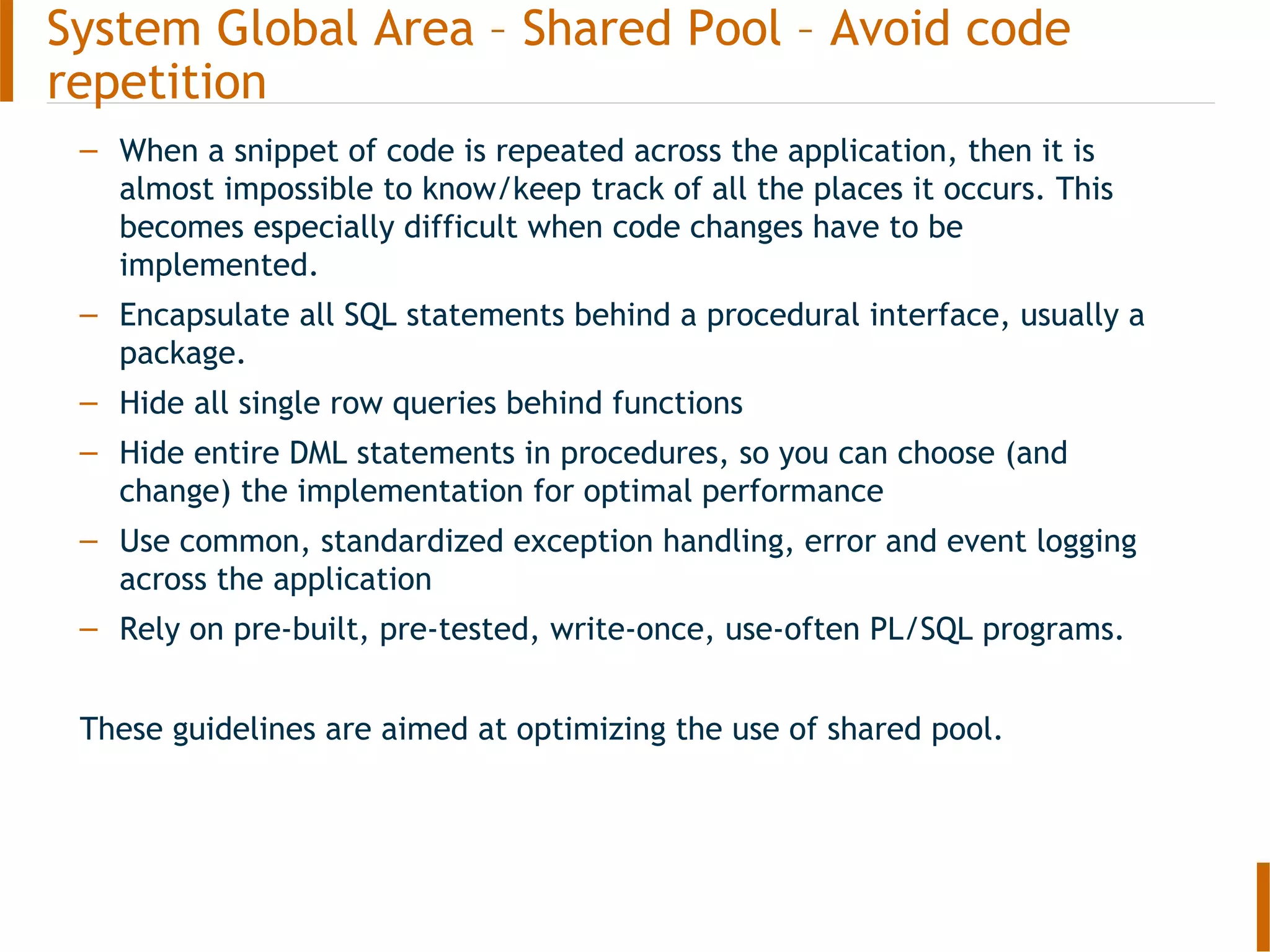
![If you have a Java program that does
for (int i=0; i<userArray.length; i++) {
String delQuery = “DELETE FROM si_users WHERE user_id = “ +
userArray[i];
stmt.executeUpdate(delQuery);
}
When executed, this code generates SQL as below. Each
statement has to be parsed separately in
Shared Pool !. Bad Idea !
DELETE FROM si_users WHERE user_id = 100001
DELETE FROM si_users WHERE user_id = 100002
DELETE FROM si_users WHERE user_id = 100003
DELETE FROM si_users WHERE user_id = 100004
DELETE FROM si_users WHERE user_id = 100005
DELETE FROM si_users WHERE user_id = 100006
...
System Global Area – Shared Pool – Use bind
variables
Parsing is
expensive!!!](https://image.slidesharecdn.com/01oraclearchitecture-150331055929-conversion-gate01/75/01-oracle-architecture-19-2048.jpg)
![System Global Area - Use bind variables
It can be rewritten as below-
String delQuery = “DELETE FROM si_users WHERE user_id = ?”;
// Alternatively use
// delQuery = si_users.delete_user(?);
stmt = conn.prepareCall(delQuery);
for (int i=0; i<userArray.length; i++) {
stmt.setInt(1, userArray[i]);
stmt.execute();
}
Inside shared pool
DELETE FROM si_users WHERE user_id = :b1
A very happy database
!!!](https://image.slidesharecdn.com/01oraclearchitecture-150331055929-conversion-gate01/75/01-oracle-architecture-20-2048.jpg)

